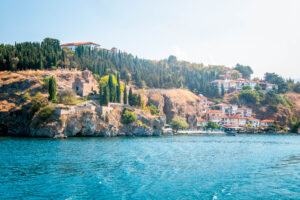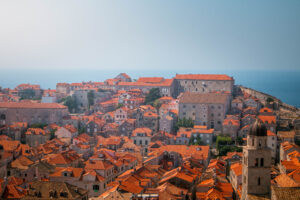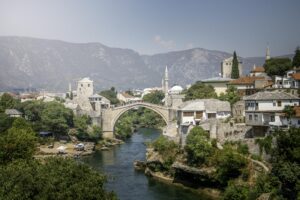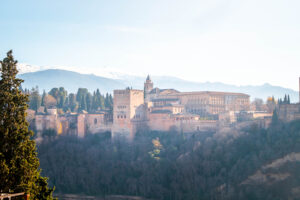📌 Short on time? Pin for later!
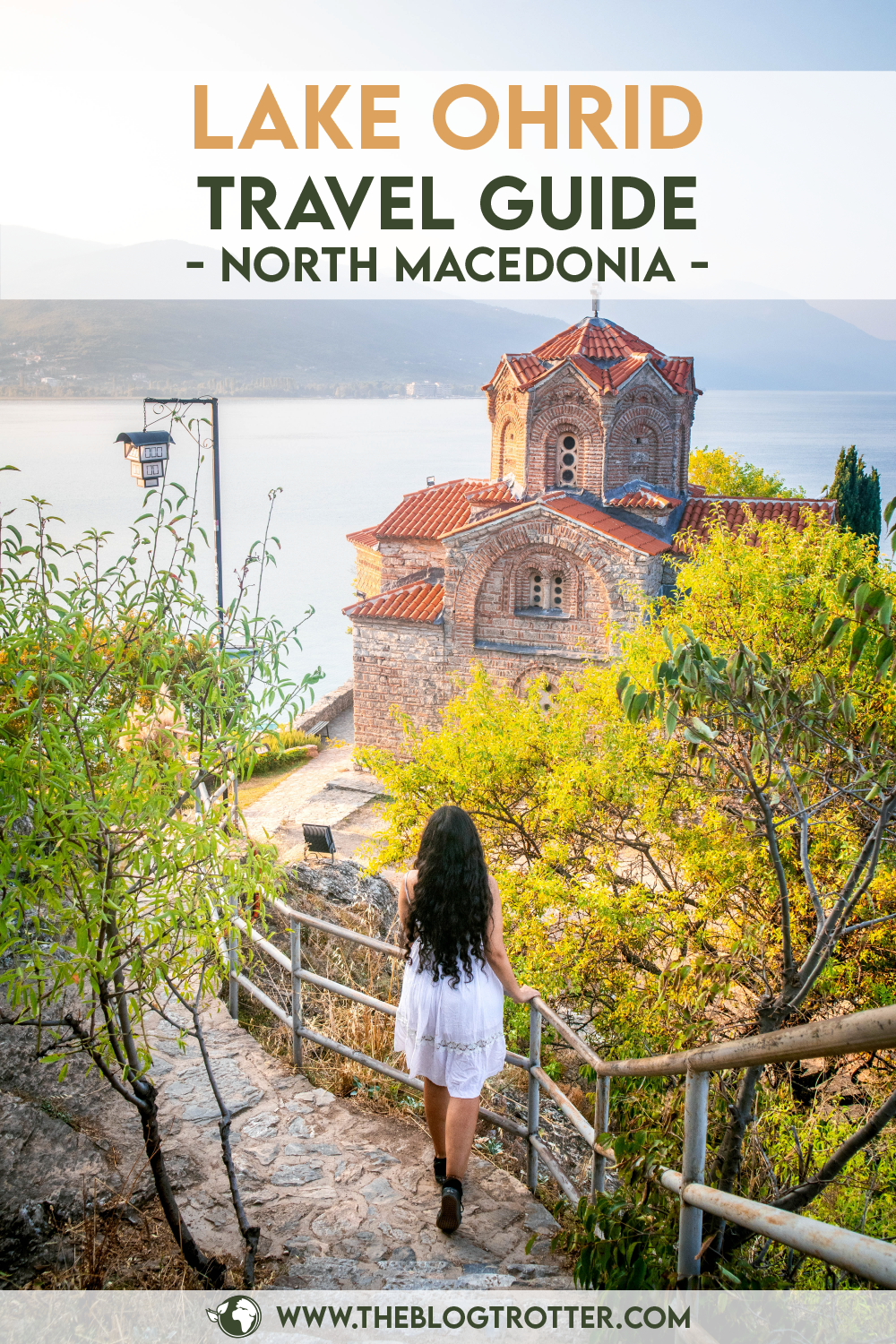
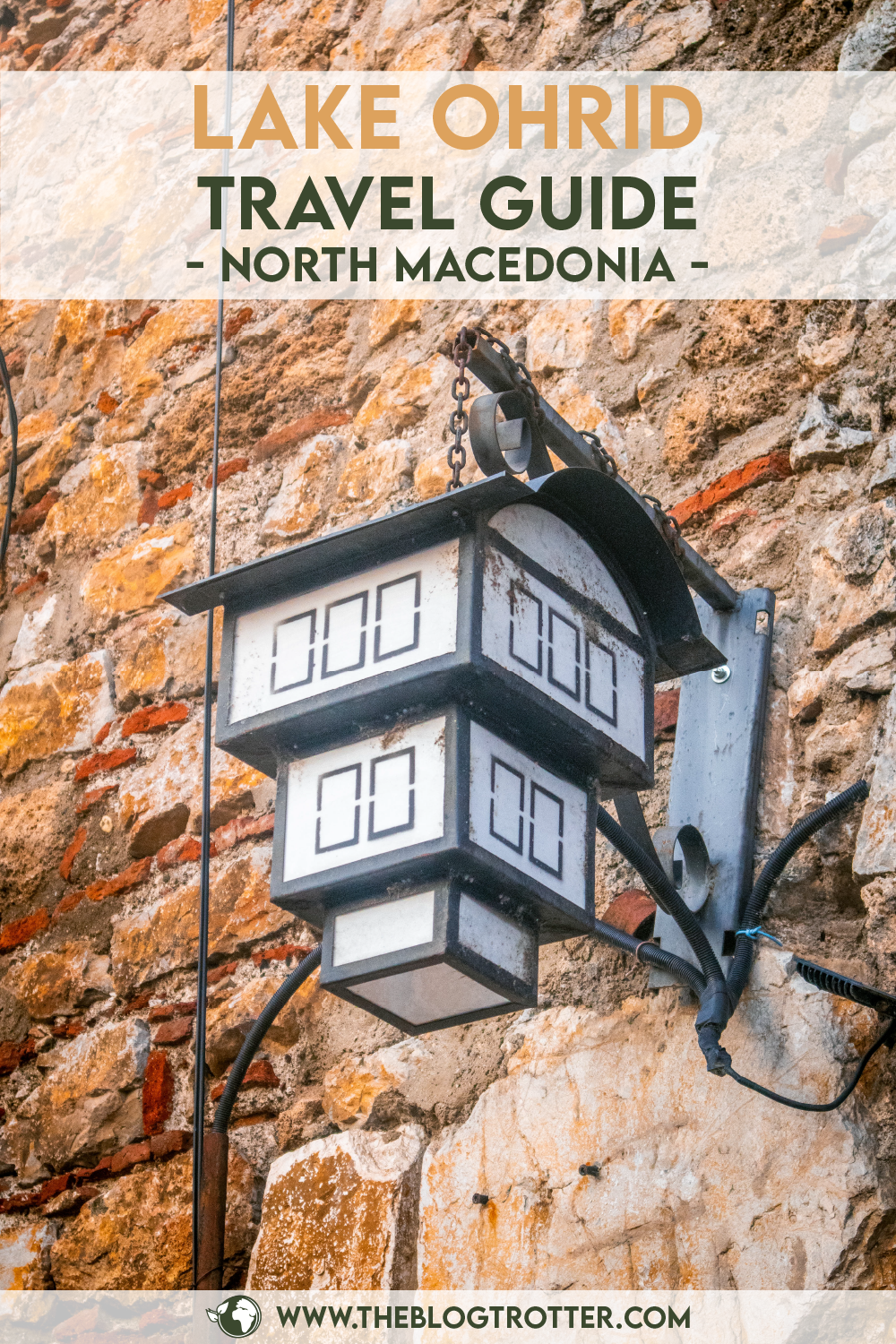
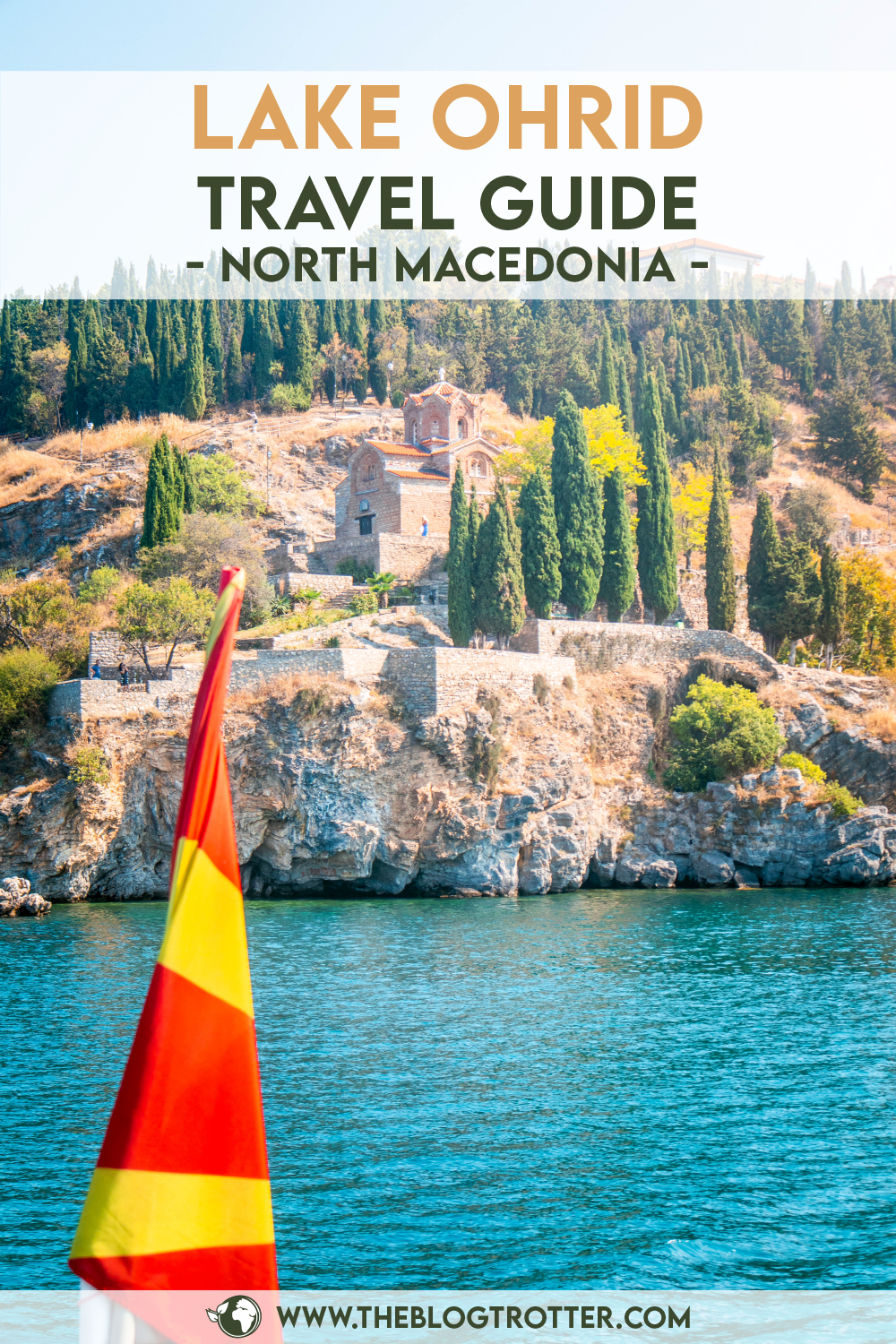
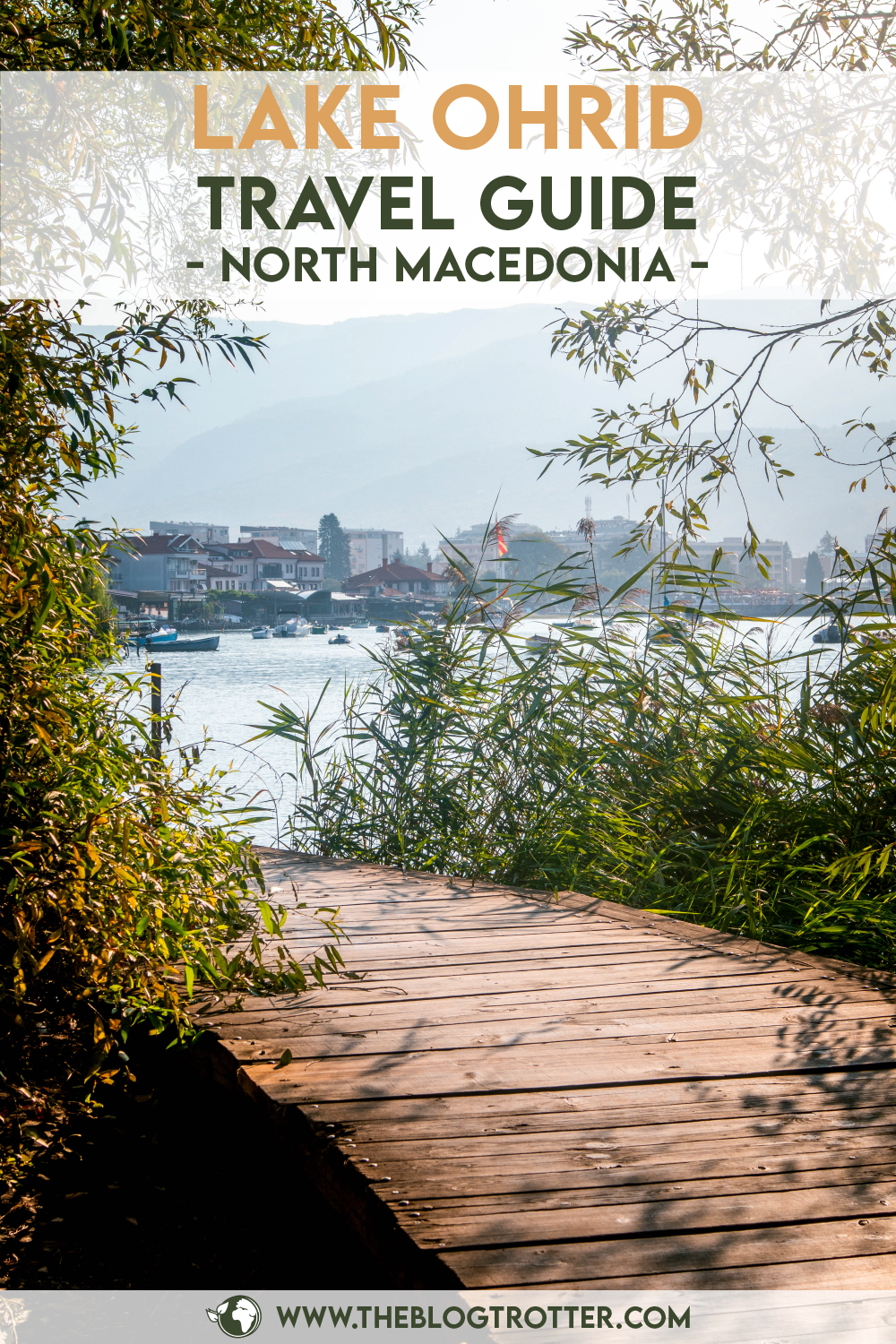
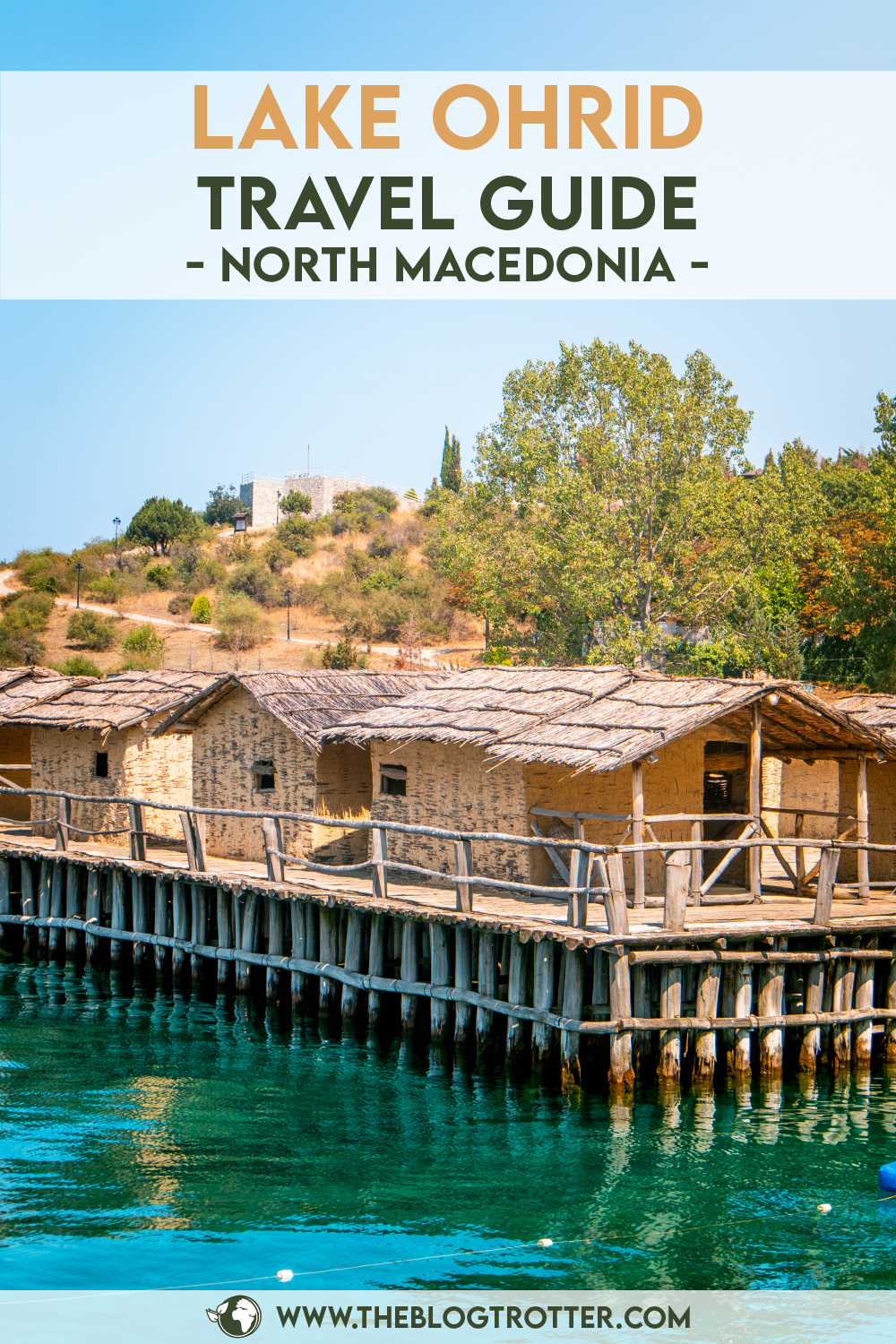
Why visit Lake Ohrid, North Macedonia in 2025
A UNESCO Double World Heritage Site
Lake Ohrid is a UNESCO World Heritage Site for both its natural and cultural significance; a rare double designation that speaks volumes about its importance. The lake itself is one of Europe’s oldest and deepest, reaching depths of 300 meters and spanning 34 kilometers across the North Macedonia-Albania border.
Exceptional Value for Money
What truly sets Ohrid apart is its affordability. While maintaining the charm and beauty of famous European lake destinations like Como or Geneva, Ohrid offers exceptional value for money. A week by Lake Ohrid costs roughly what you’d pay for a single night at its Italian equivalent, making it perfect for budget-conscious travelers who refuse to compromise on quality.
The Jerusalem of the Balkans
The town of Ohrid, often called the “Jerusalem of the Balkans,” once boasted 365 churches: one for every day of the year! Today, many of these Byzantine-era structures still stand, creating a living museum of Orthodox Christian architecture and art. Combined with crystal-clear waters, pebble beaches, and a vibrant local food scene, Ohrid Macedonia deserves a prominent spot on every traveler’s bucket list.
Lake Ohrid is shared by two countries, North Macedonia and Albania, and both sides are recognized by UNESCO for their natural and cultural heritage.
Best Time to Visit Lake Ohrid, North Macedonia
The ideal time to visit Ohrid, North Macedonia is between May and September when temperatures are warm and perfect for swimming. July and August are peak season, bringing lively festivals, bustling beach bars, and the best weather for water activities. However, these months also see the largest crowds.
For a more peaceful experience with pleasant weather, consider visiting in June or September. The shoulder seasons offer comfortable temperatures, fewer tourists, and lower accommodation prices. Winter (November through March) is quiet with many attractions operating on reduced schedules, though the Old Town maintains its charm year-round.

How to Get to Lake Ohrid
This section of the Lake Ohrid travel guide ensures you know all the transport options, whether you prefer speed, convenience, or scenic routes.
✈️ Flying into St. Paul the Apostle Airport
Ohrid has its own airport (St. Paul the Apostle Airport) with seasonal connections to some European cities. Alternatively, fly into Skopje’s international airport, which offers more flight options, then take a 3-hour bus to Ohrid.
To get from Ohrid Airport to Ohrid City, you are limited to airport taxis and private transfers, because there is no existing public transport to and from the airport.
- Taxi: there is one taxi company, called Taxi Mercedes, that offers transport between Ohrid Airport and various destinations. To get from Ohrid airport to Ohrid city center, pricing starts at 730 Macedonian dinars (~12€).
- Private transfer: If you want to save yourself the negotiation and have some peace of mind as soon as you land, this might be the best option for you. Prices start at 40€ per vehicle, which makes it a perfect option if you are traveling with family or friends. You can book your Ohrid airport to Old Town private transfer here.
🚌 Buses to and from Ohrid
Regular bus services connect Ohrid to major cities throughout North Macedonia and neighboring countries. Direct buses run from Skopje, Bitola, Prilep, and Tirana (Albania).
- Skopje – Ohrid: Check timetable and prices here
- Tirana (Albania) – Ohrid: Check timetable and prices here
Ohrid’s main bus station is located in the Gruž district, about 2 km from the Old Town. From there, local buses and taxis can get you into the city center quickly.
🚗 Driving to Ohrid
Driving to Ohrid offers flexibility to explore surrounding areas. The roads are generally good, and parking is available throughout town, though it can be limited in the Old Town during peak season.
Top things to do in Lake Ohrid, North Macedonia
1. Discover the Church of St. John at Kaneo
Without question, the Church of St. John at Kaneo is Ohrid’s most iconic landmark and possibly the most photographed spot in all of North Macedonia. This 13th-century Byzantine church perches dramatically on a cliff overlooking Lake Ohrid, creating a postcard-perfect scene that captures the essence of this historic town.
Dedicated to John of Patmos (possibly John the Apostle), author of the Book of Revelation, the small church exemplifies traditional Macedonian Orthodox architecture. Its clifftop position offers breathtaking views of the lake and surrounding landscape, making it a favourite spot for photographers and sunset seekers.
🎟️ The Church of St. John at Kaneo is free to view from outside. Access to the interior costs 150 Macedonian dinars (approximately 2.5€).
🕒 The Church of St. John at Kaneo is open from 9.00AM to 6.00PM.
💡 Tip: Visit early morning to avoid crowds and enjoy the best light for photography.
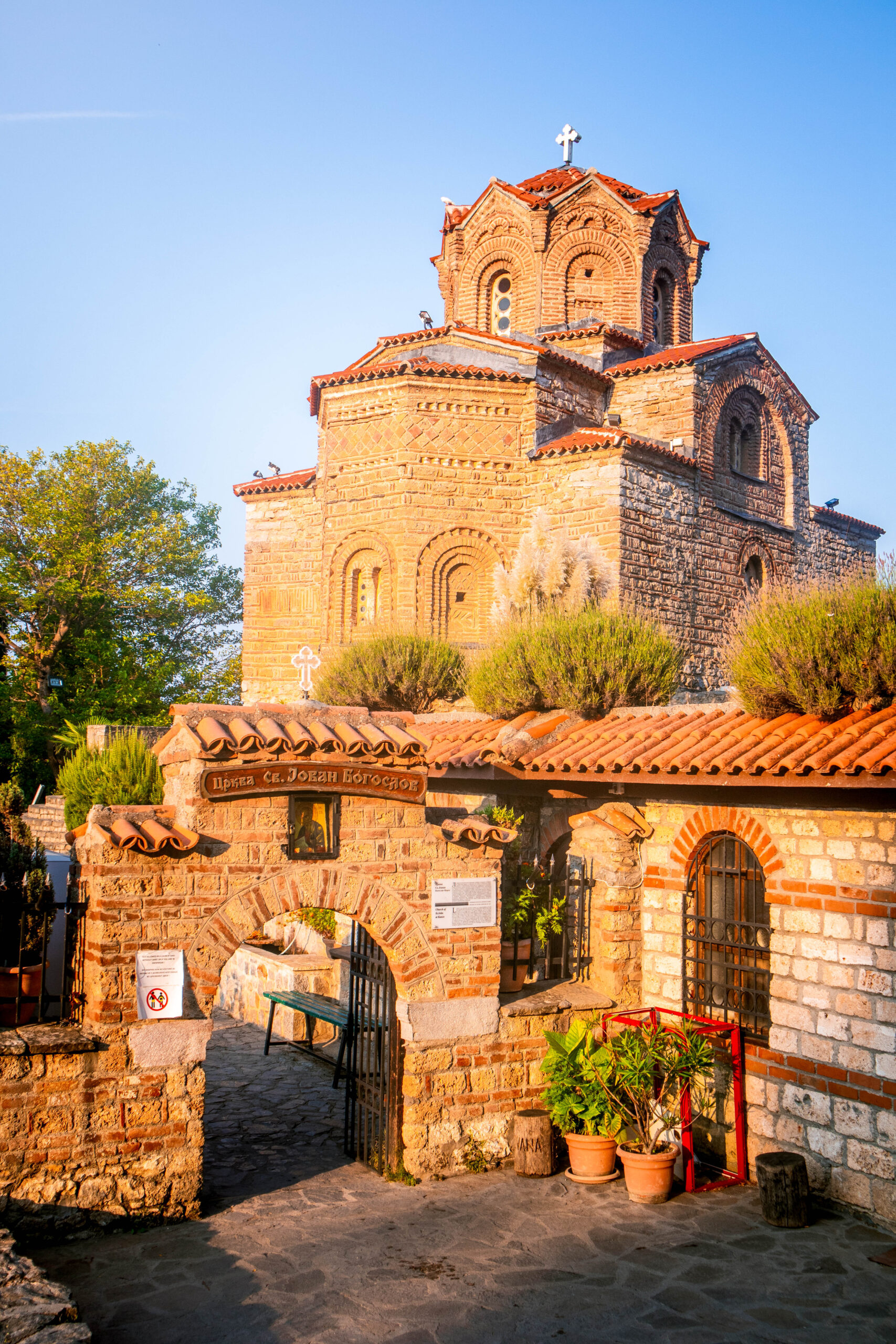
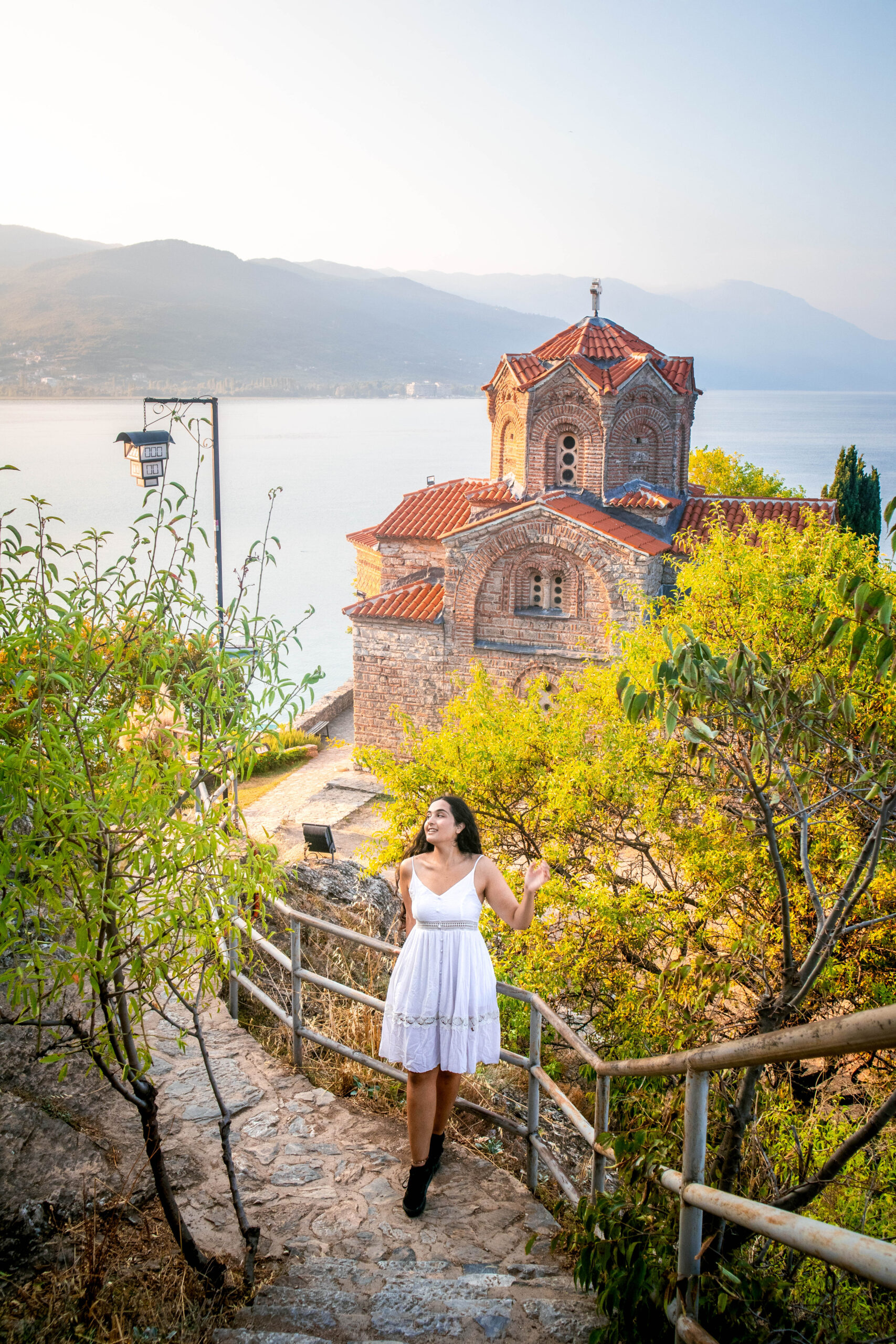
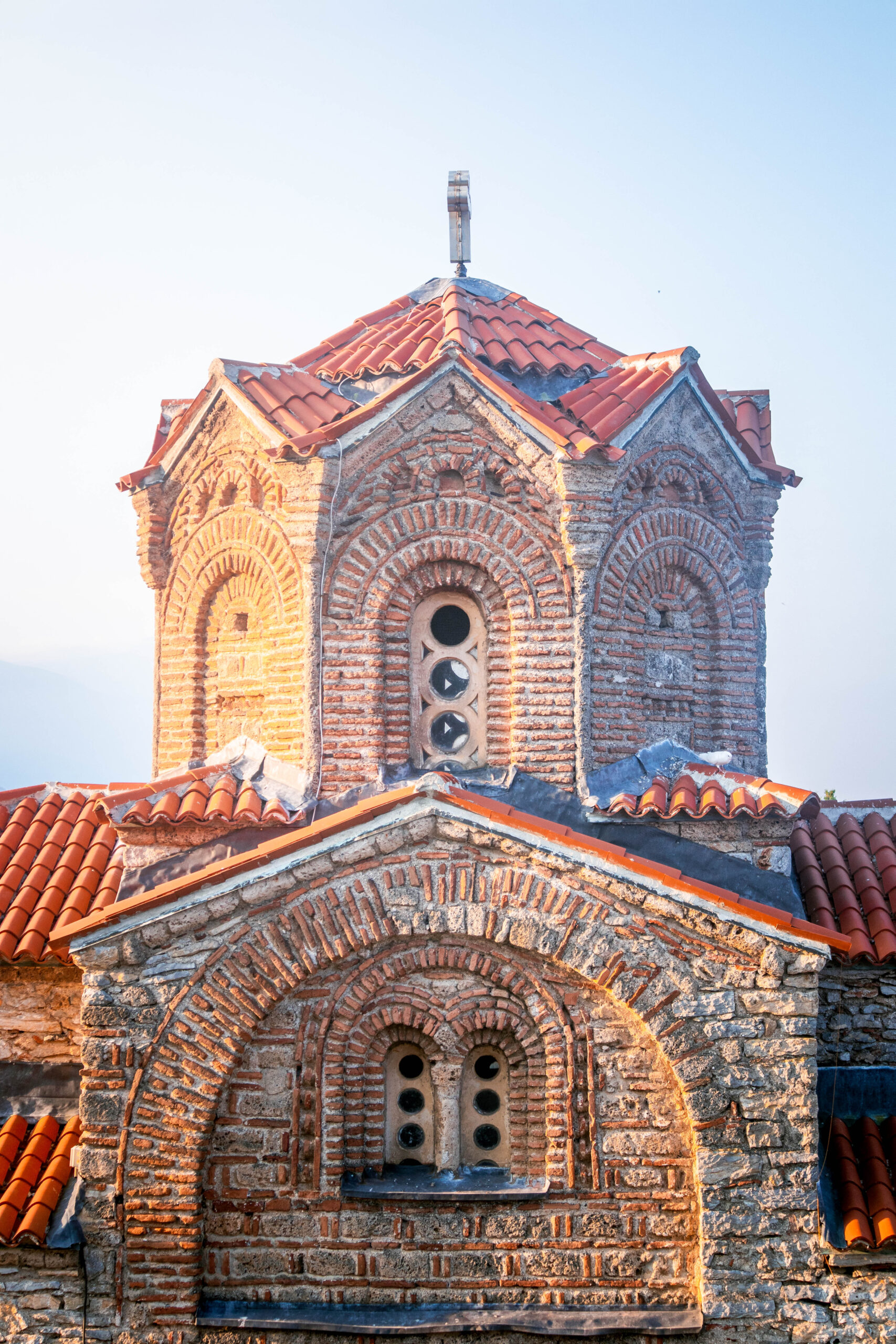
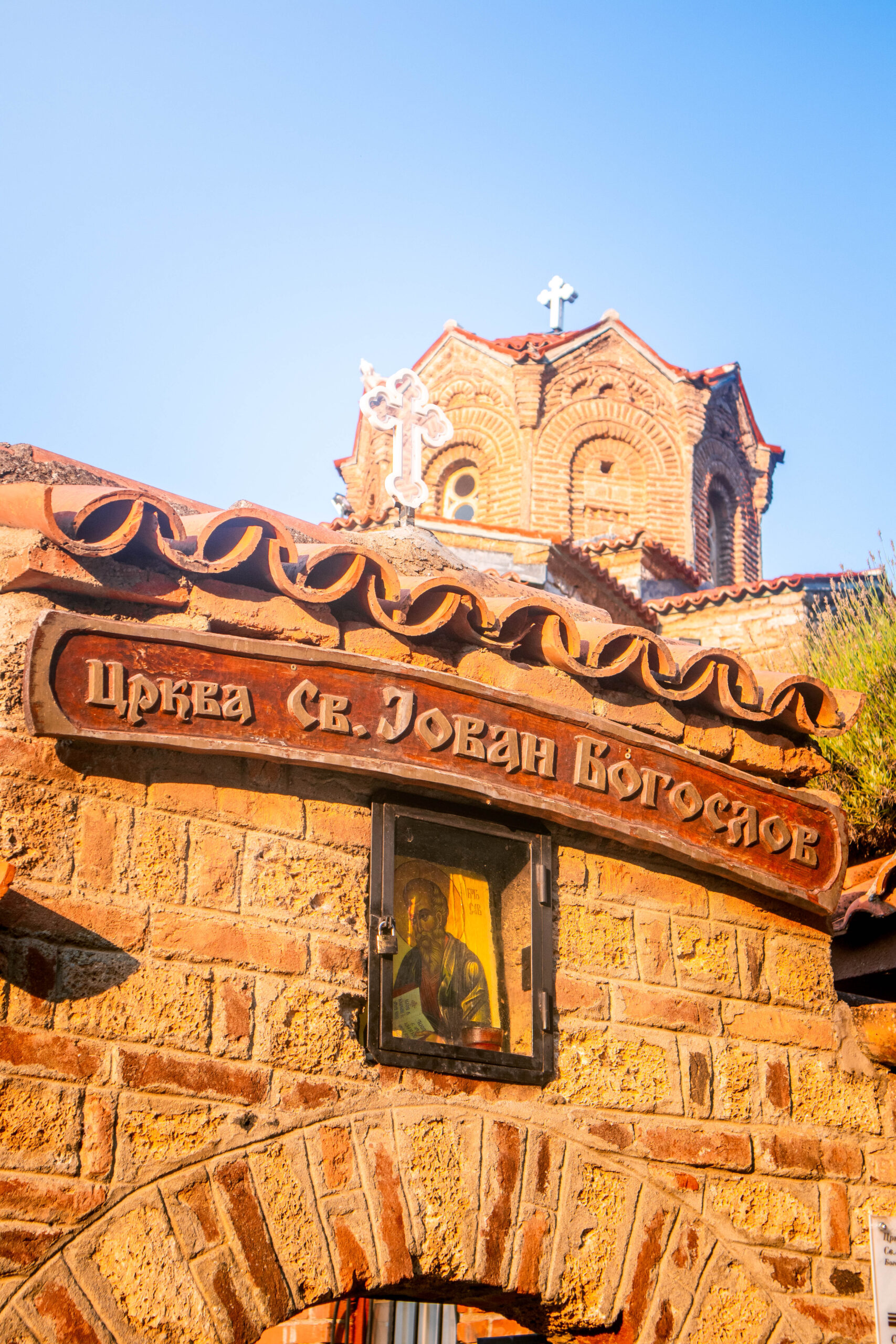
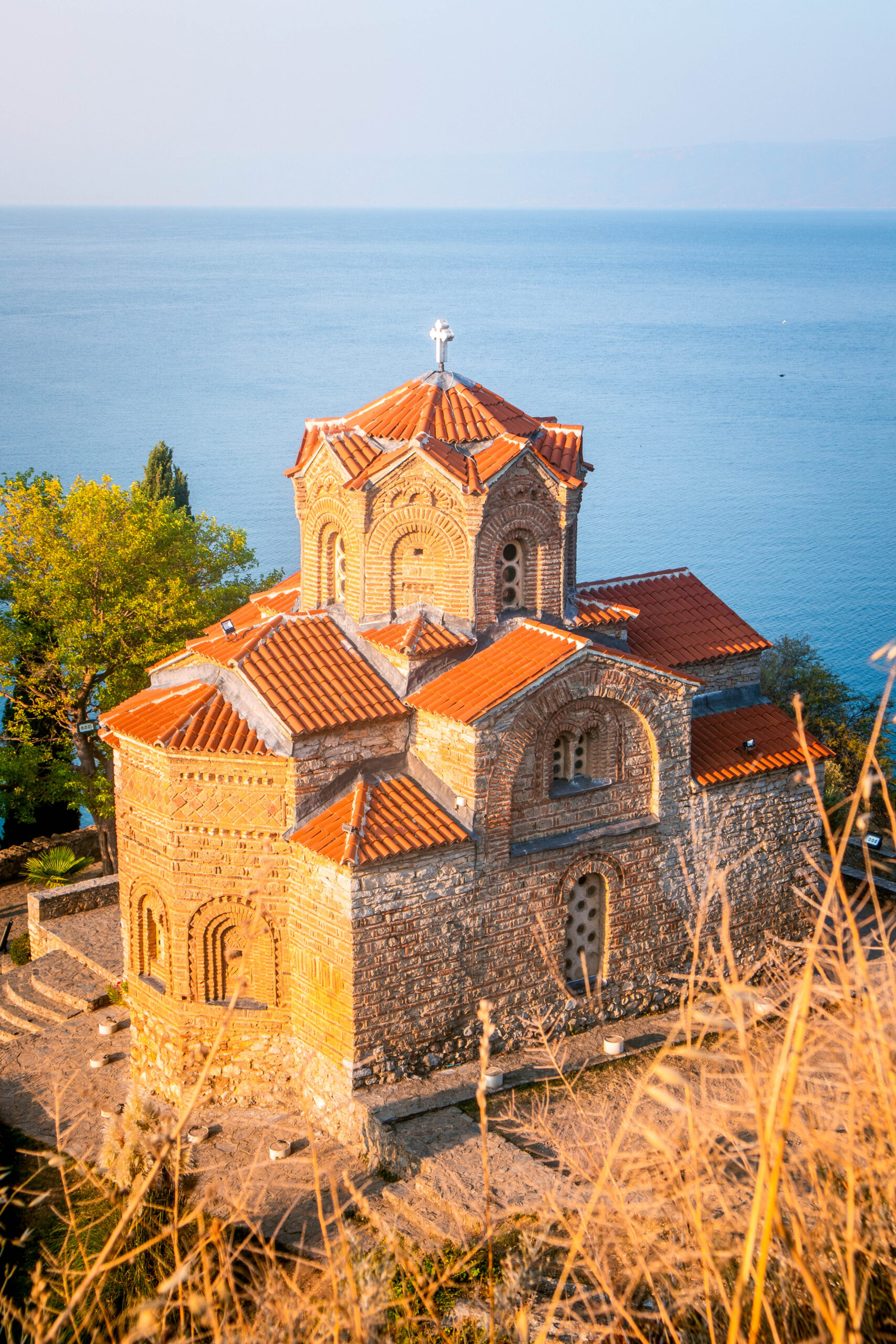
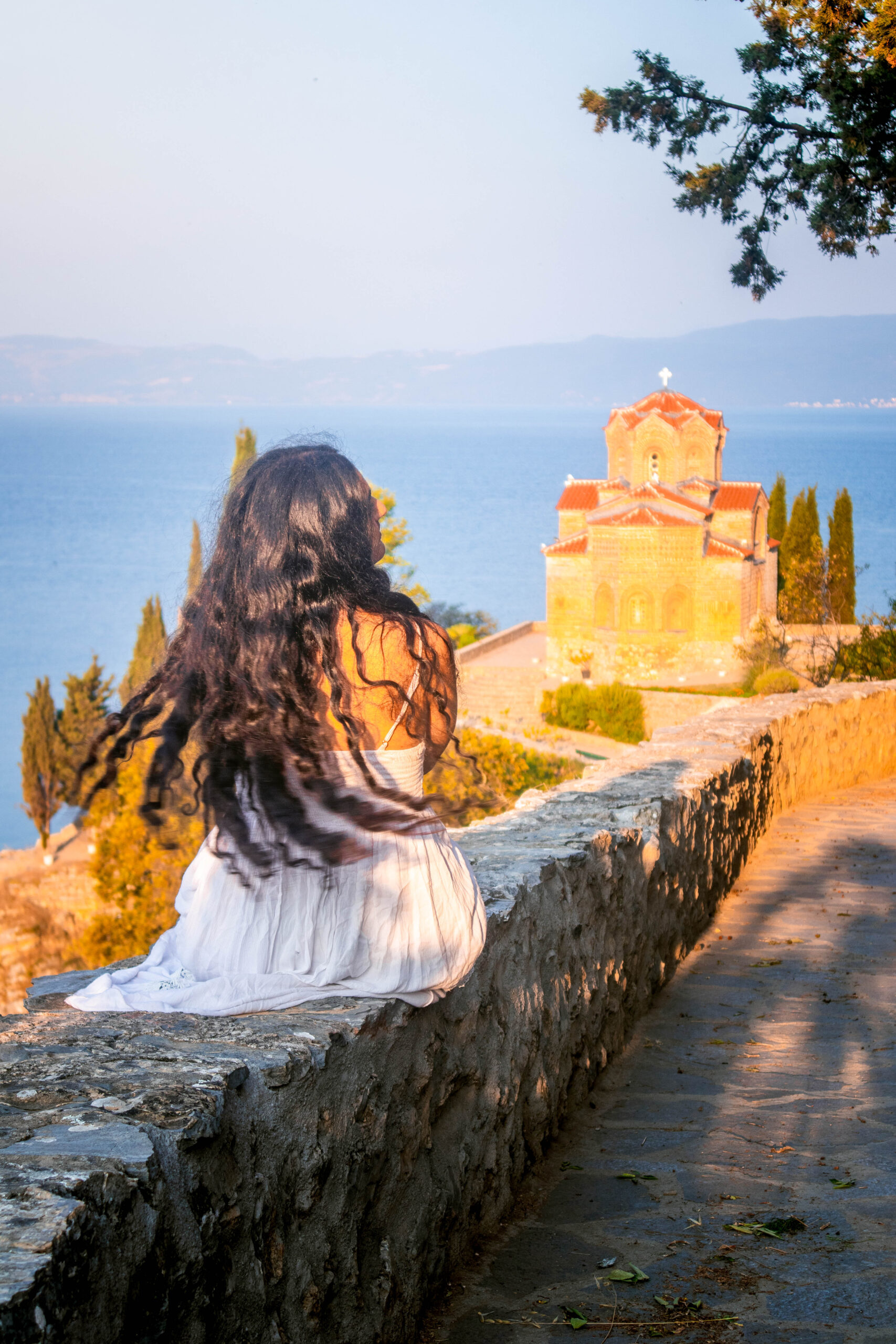
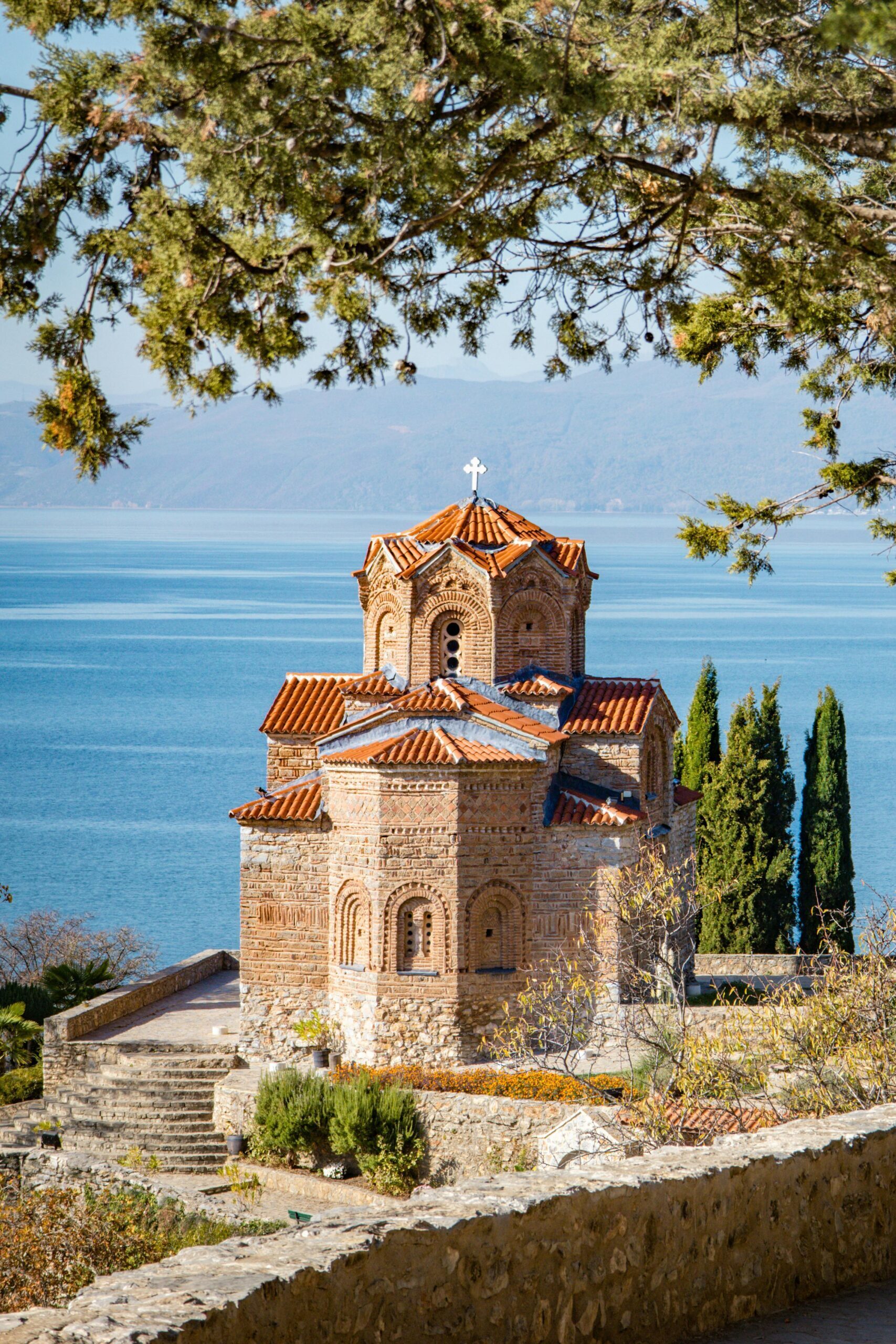
2. Explore Ohrid Old Town highlights
Ohrid Old Town is a labyrinth of cobblestone streets, Byzantine churches, and historic buildings waiting to be discovered. Exploring it on foot is one of the most rewarding experiences in Ohrid. The town’s compact size means you can wander freely, and every corner reveals another layer of history. I loved getting lost in the quieter alleyways where local life unfolds, but also make sure to seek out these highlights:
- Church of St. Sophia – Medieval church in the town center with stunning Byzantine frescoes and a peaceful green garden.
- Plaošnik – Archaeological site dating to 893 AD featuring the Church of Saints Clement and Panteleimon and ongoing excavations.
- Ohrid Pearls Museum – Discover the secret family technique behind famous Ohrid pearls, crafted from scales of the endemic Plasica fish using methods passed down through generations.
- National Workshop for Handmade Paper – This tiny shop houses one of only two copies of the Gutenburg Press in the world and offers free demonstrations of 16th-century papermaking techniques.
- Robevci House (National Ohrid Museum) – Traditional Macedonian architecture with cultural exhibits showcasing local life through the centuries.
- Ancient Chinar Tree – Centuries-old plane tree in the bazaar that has witnessed countless generations of Ohrid’s history.
✨ For a comprehensive introduction to Ohrid’s rich heritage, consider joining this highly-rated guided walking tour of Ohrid Old Town. During 2 hours, your local guide will share fascinating stories and historical context that bring the Old Town to life, helping you understand why this compact city earned its UNESCO World Heritage status.
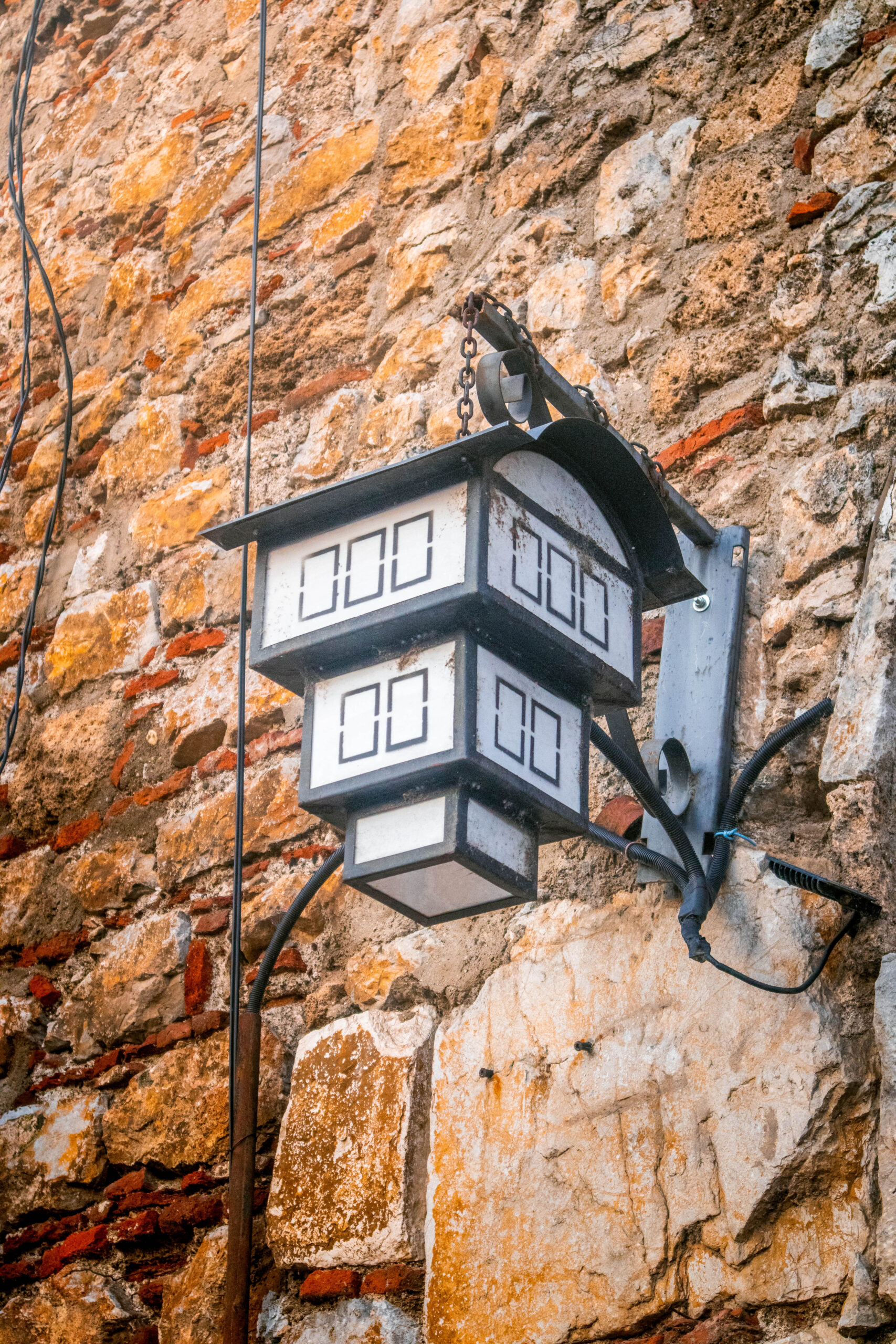
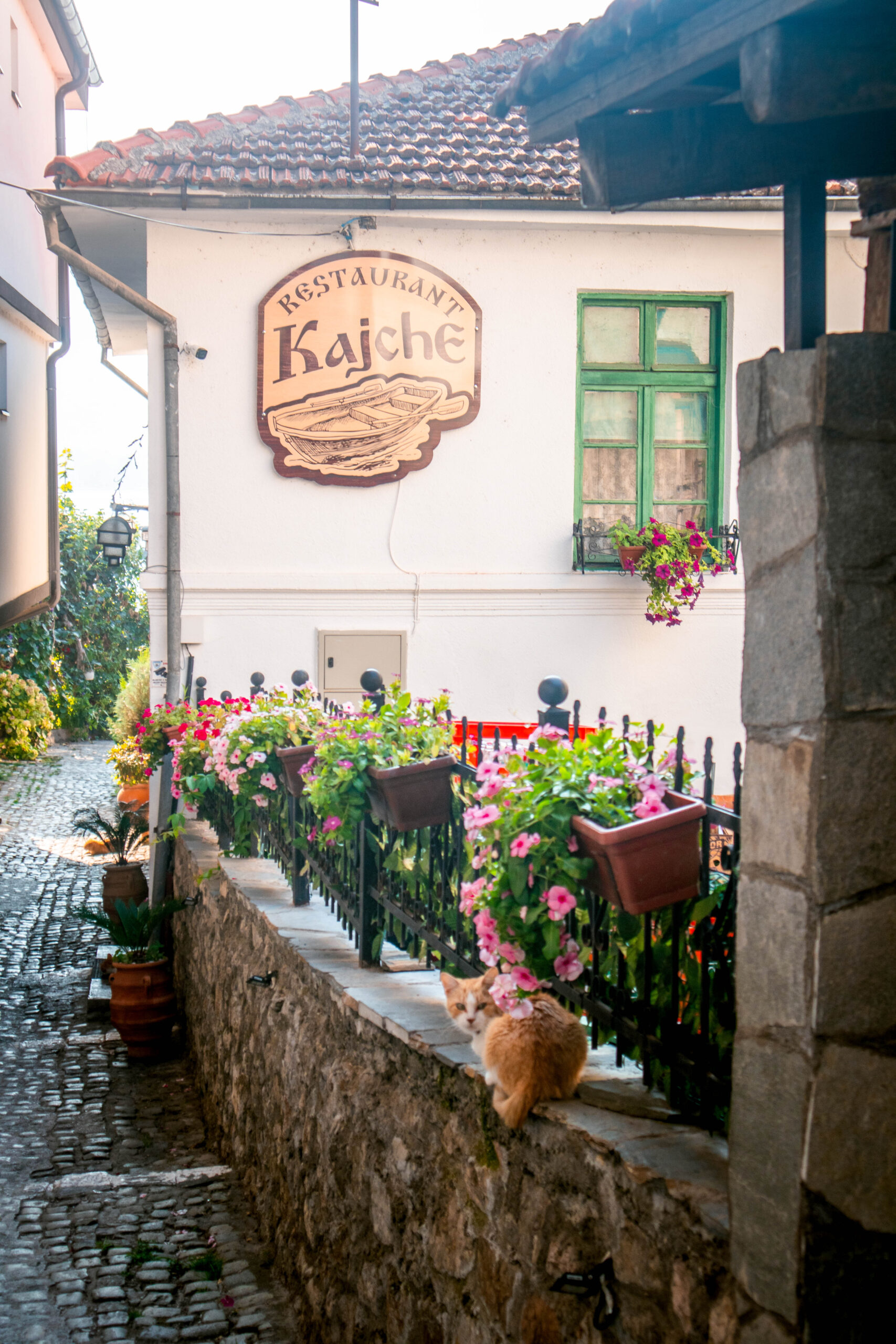
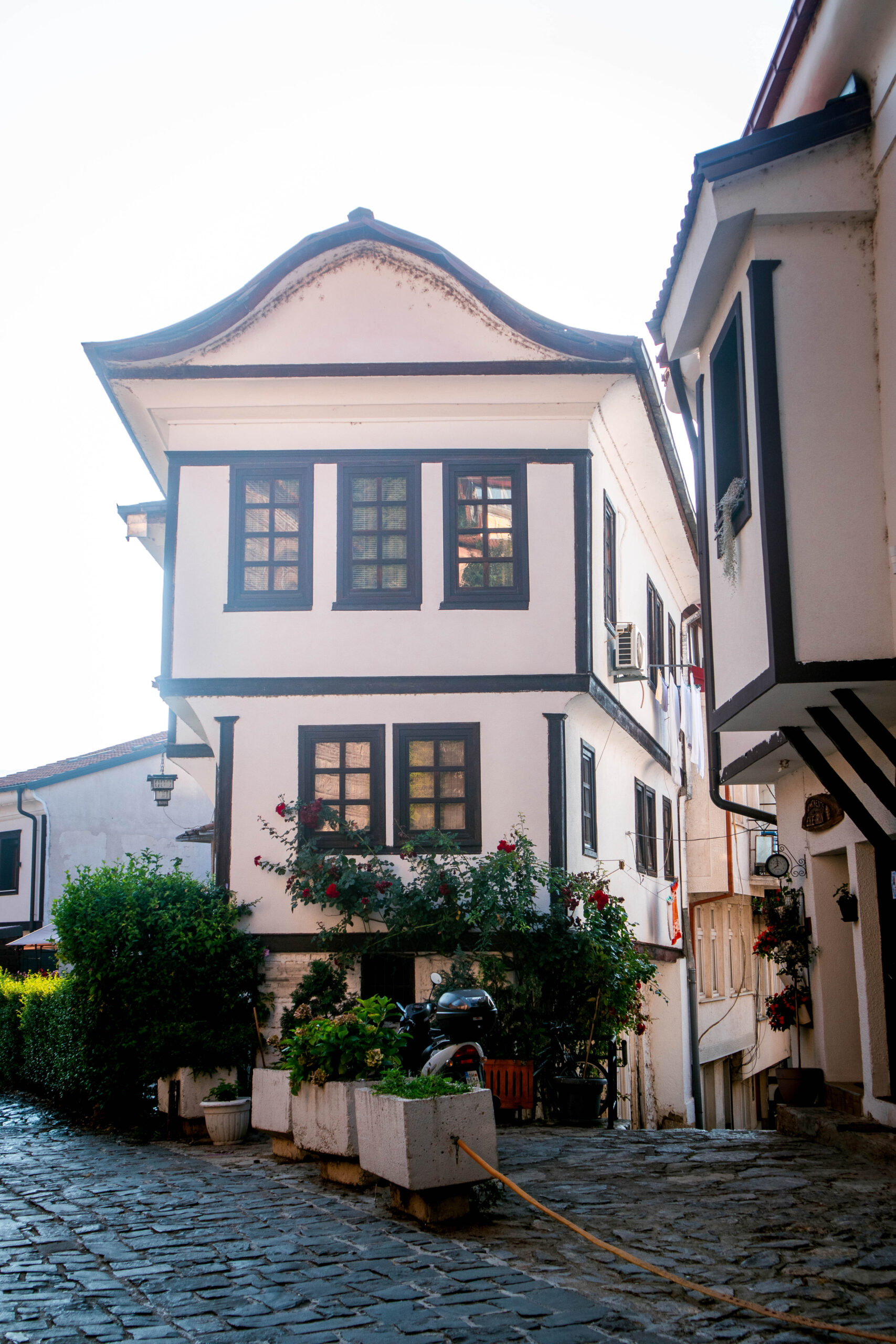
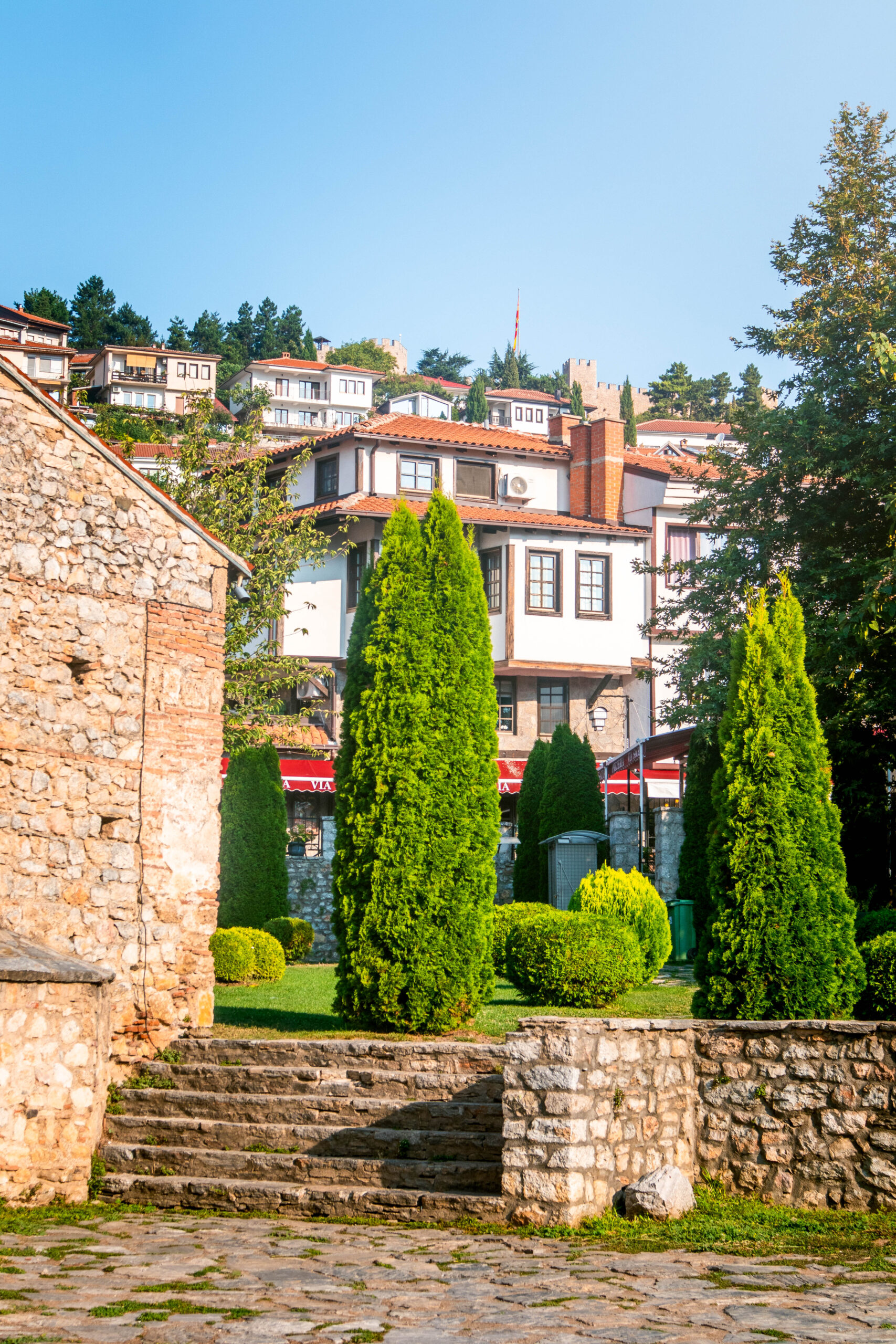
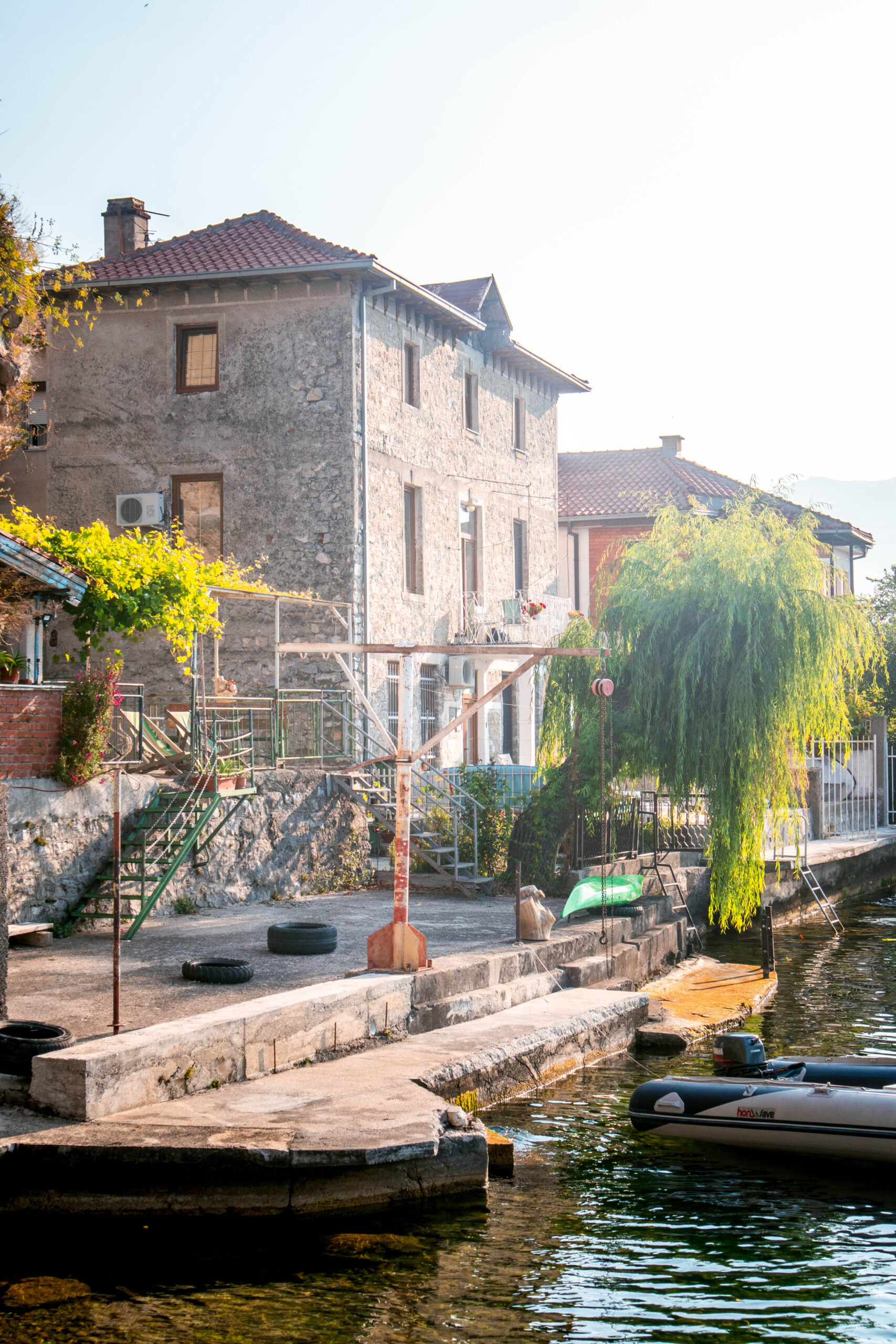
3. Enjoy Water Sports and Kayaking
Lake Ohrid’s calm, glassy waters make it ideal for stand-up paddleboarding and kayaking. Being a lake rather than the sea means there are no rip tides or strong currents, so even beginners can safely enjoy the water. Several local businesses along the waterfront rent out kayaks and paddleboards, complete with life jackets, dry bags, and safety radios.
If you are new to stand-up paddleboarding, this 2-hour class including professional guiding and visits to hidden spots only accessible by water might be the perfect fit for you. Picture this: you’re paddleboarding across serene waters, with mountain views and historic churches as your backdrop; definitely solid material for unforgettable memories!
If you’re looking to explore further, join a guided Lake Ohrid Kayak Tour with beach and BBQ lunch. Starting from the fishing village of Pestani, this half-day adventure takes you along the lake’s unspoiled eastern shore, passing landmarks like the Bay of Bones, secluded wild beaches only available by water, and the idyllic village of Trpejca.
4. Navigate on Lake Ohrid with a boat tour
The best way to experience Lake Ohrid’s full beauty is from the water itself. Lake Ohrid boat tours offer relaxing day cruises with stops at key landmarks and unique perspectives on the shoreline churches and villages.
Standard tours follow the eastern coast south to the Monastery of St. Naum, with stops often including Vila Biljana (former Yugoslavian President Tito’s estate), Bay of Bones archaeological site, and Holy Mother of God Zahumska Church.
The easiest way to arrange a boat tour is to directly talk to one of the local agencies along Ohrid’s port. The large shared boats typically cost around 10-15€ and depart at scheduled times (usually 10:00 AM). Smaller private boats offer more intimate experiences for approximately 25€ per person, departing around 10:30 AM.
Bay of Bones museum
This peculiar archaeological site showcases Bronze and Iron Age life on the water. The reconstructed stilt village creates an atmospheric open-air museum where you can walk through prehistoric homes and explore artifacts from the original settlement. Despite its ominous name (derived from remains found during excavation), the Bay of Bones offers fascinating historical insight rather than frightening exhibits. The floating village gives off serious Pirates of the Caribbean vibes, with its thatched-roof structures hovering over the water.
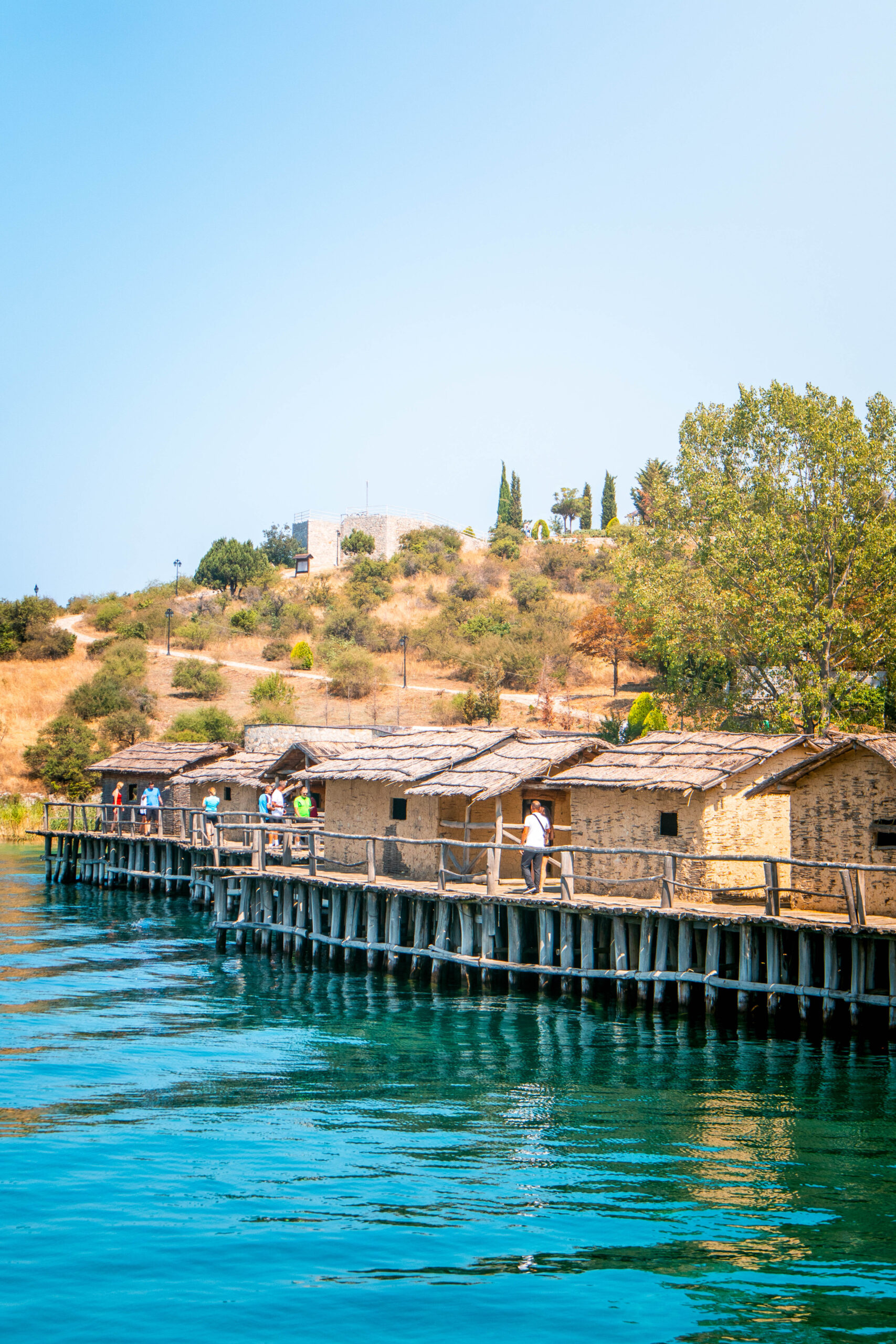
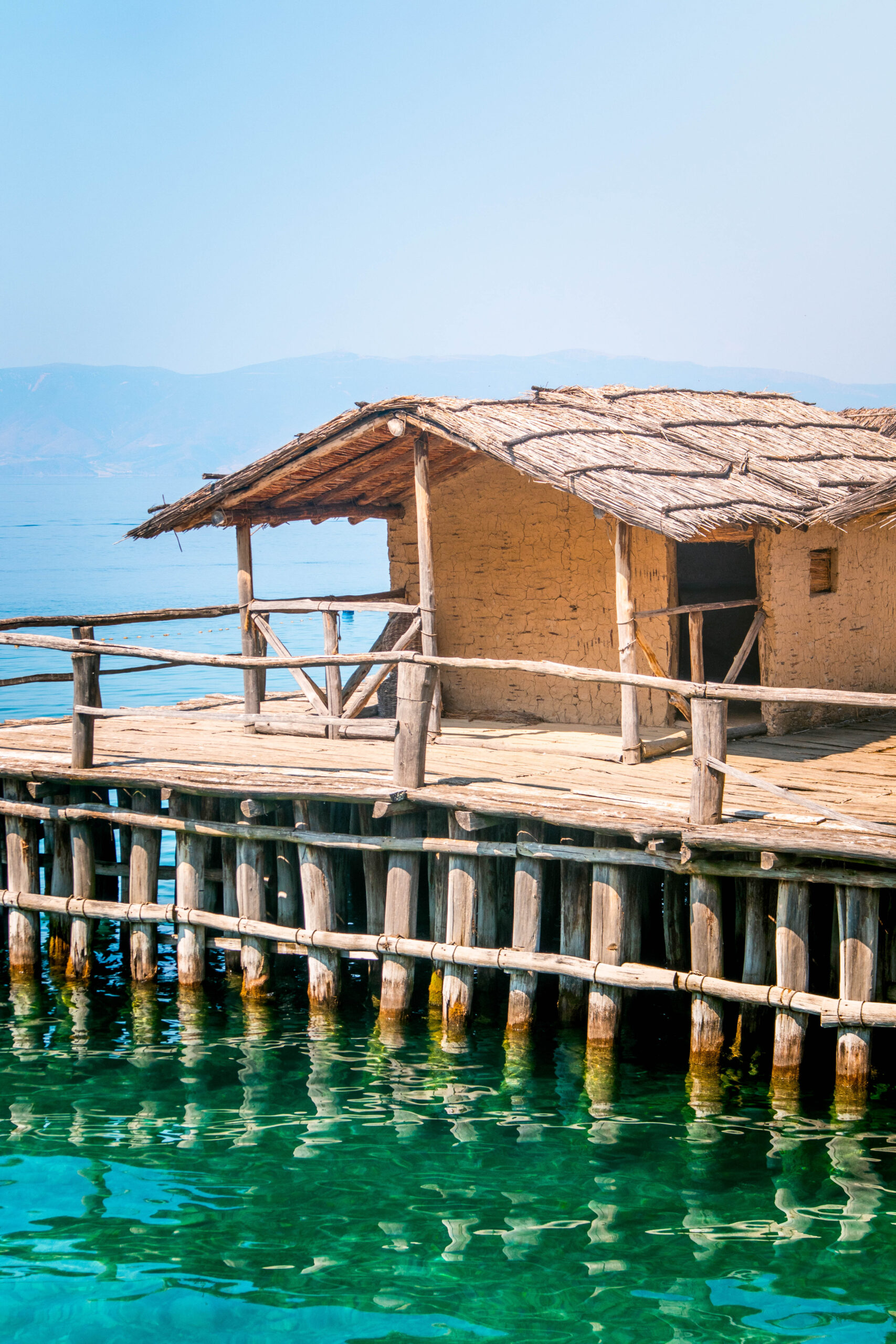
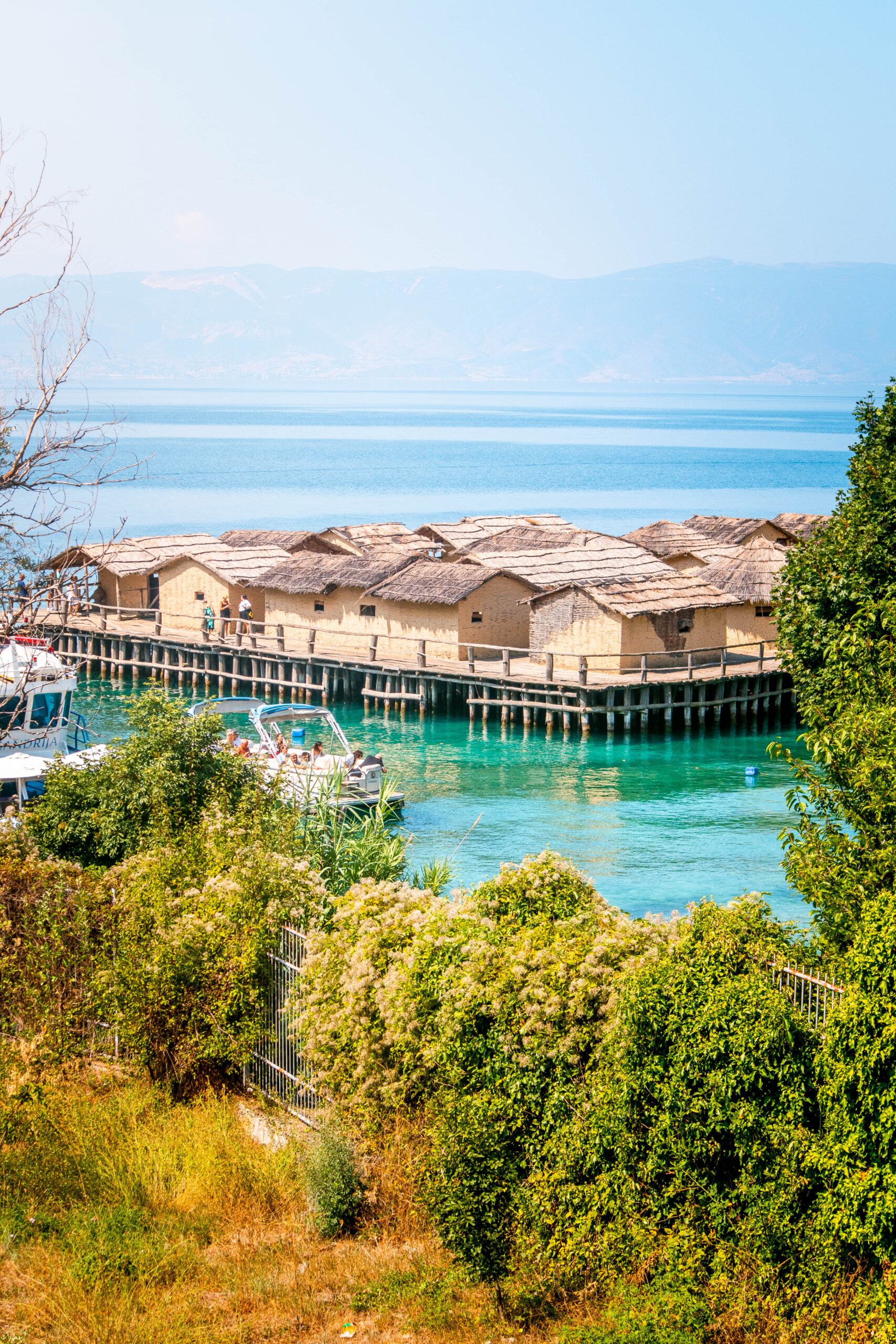
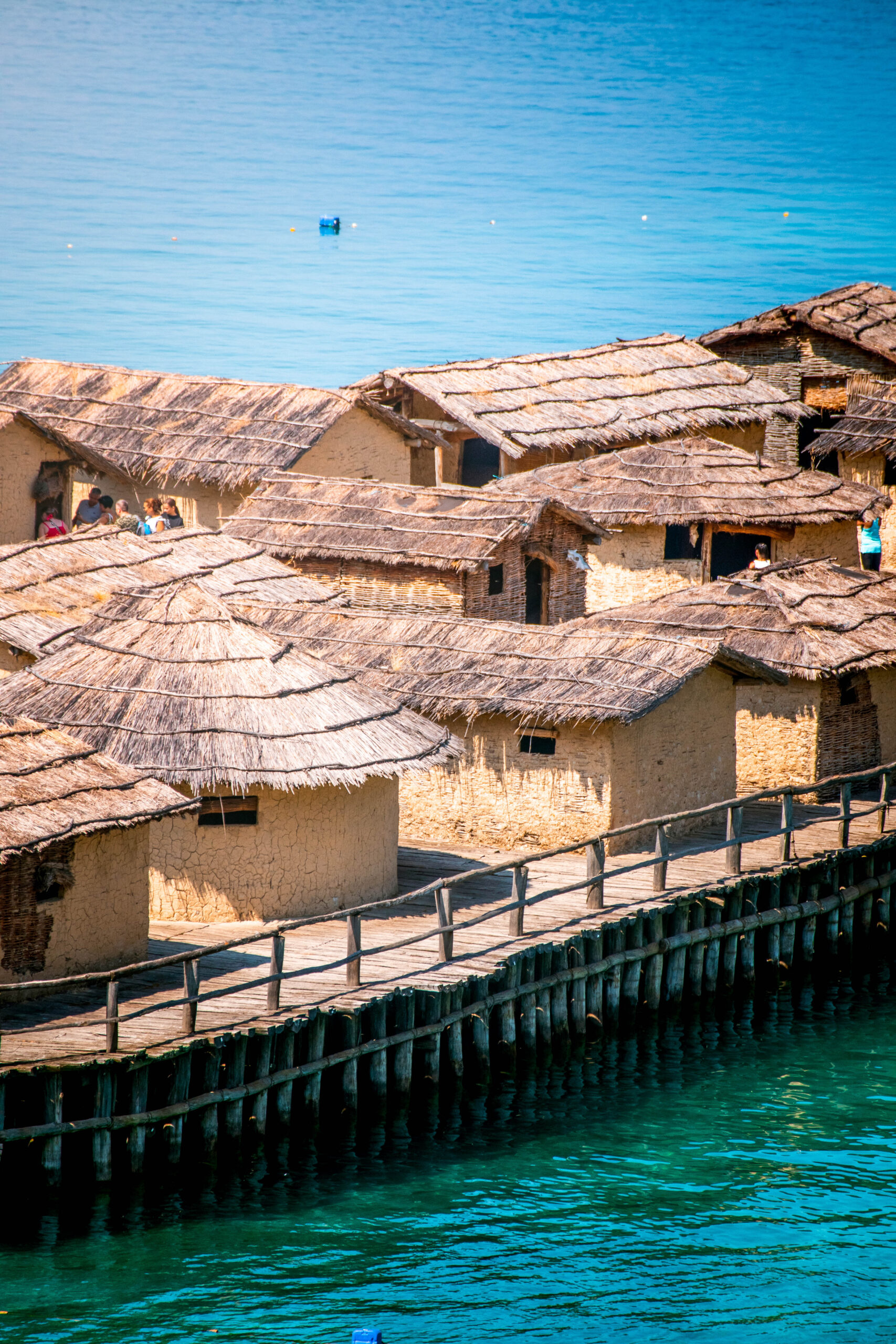
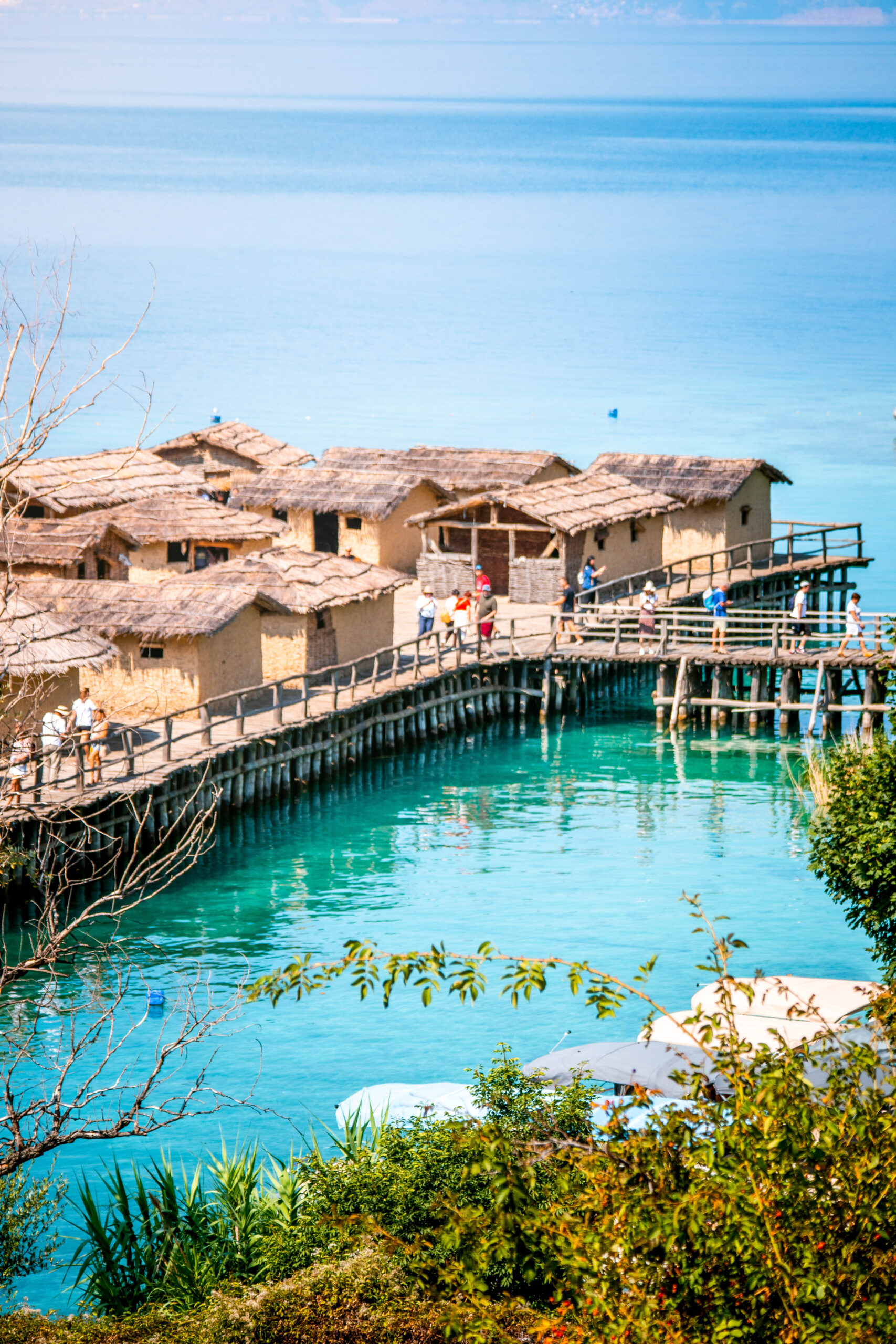
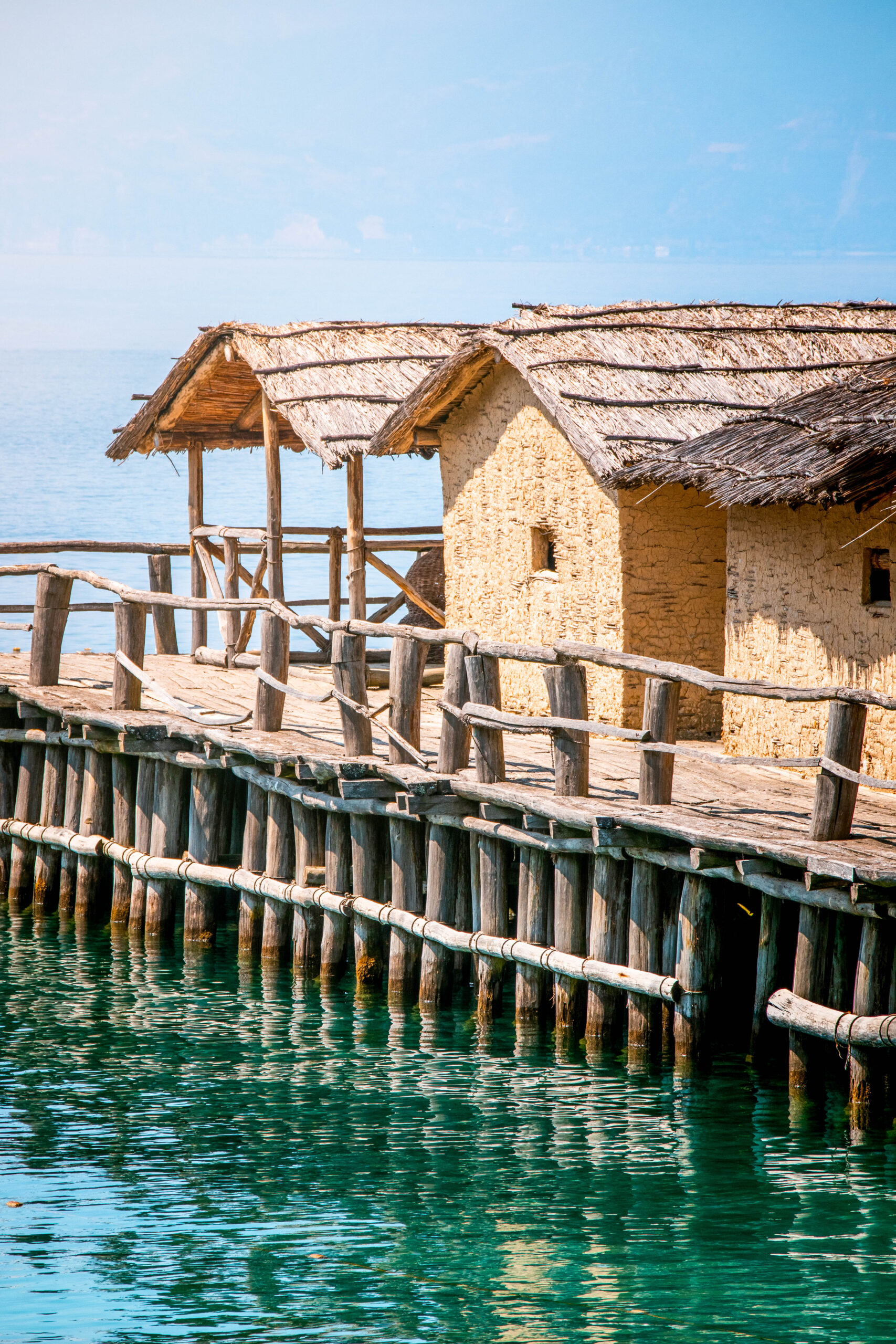
Monastery of St. Naum
The highlight of most boat tours, this Byzantine-era religious complex was built in the early 10th century by Bulgarian missionary and “wonderworker” Saint Naum. The monastery grounds feature connecting gardens with colorful peacocks, calming fountains, and the tiny Church of Saint Petka. Behind the complex, the translucent waters of Black Drim’s Springs create a magical setting where paddle boats offer rides across the placid surface.
Boat tours from Ohrid typically allow several hours here to explore the monastery, walk through memorabilia shops and outdoor eateries, and swim at stunning Sveti Naum Beach.
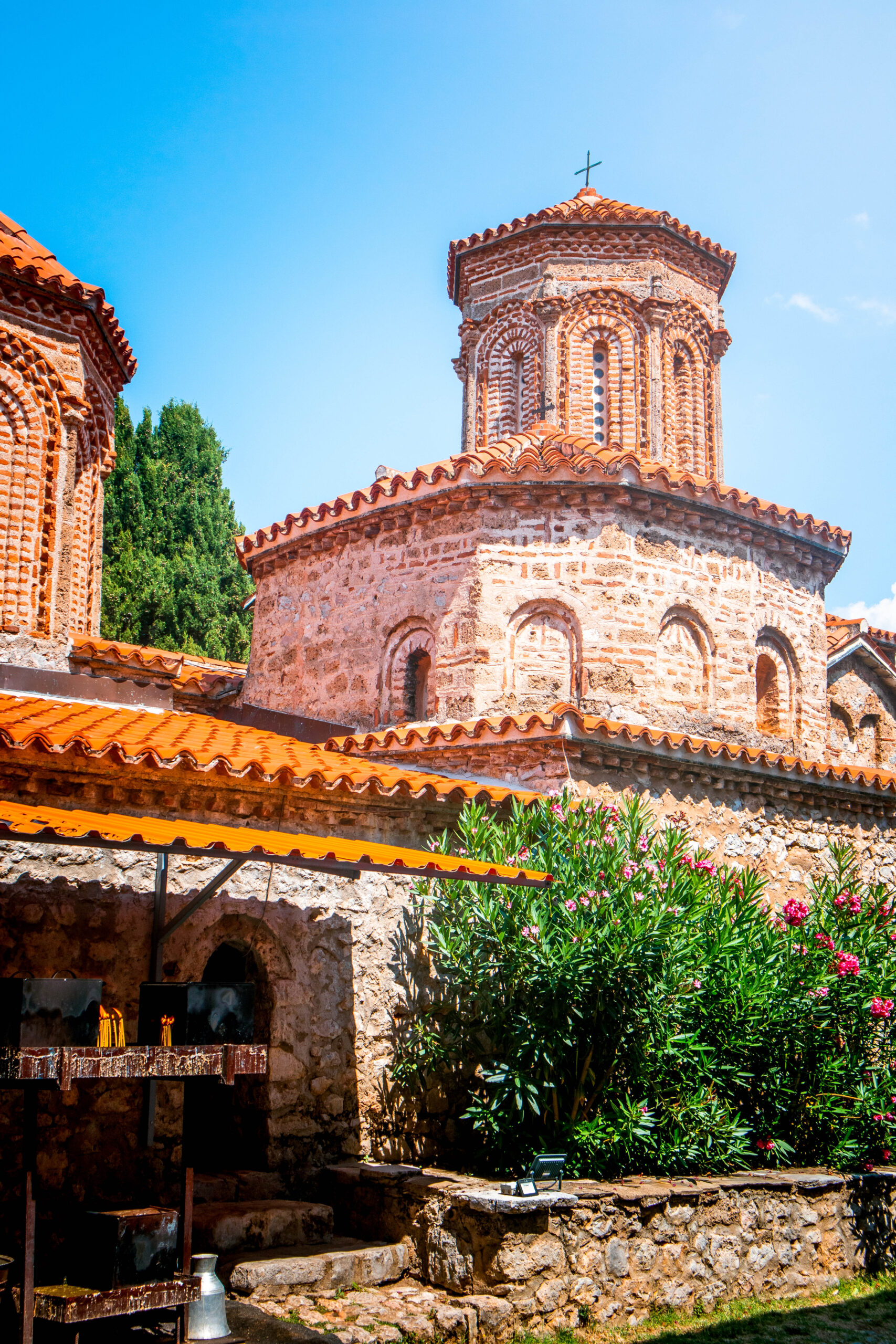
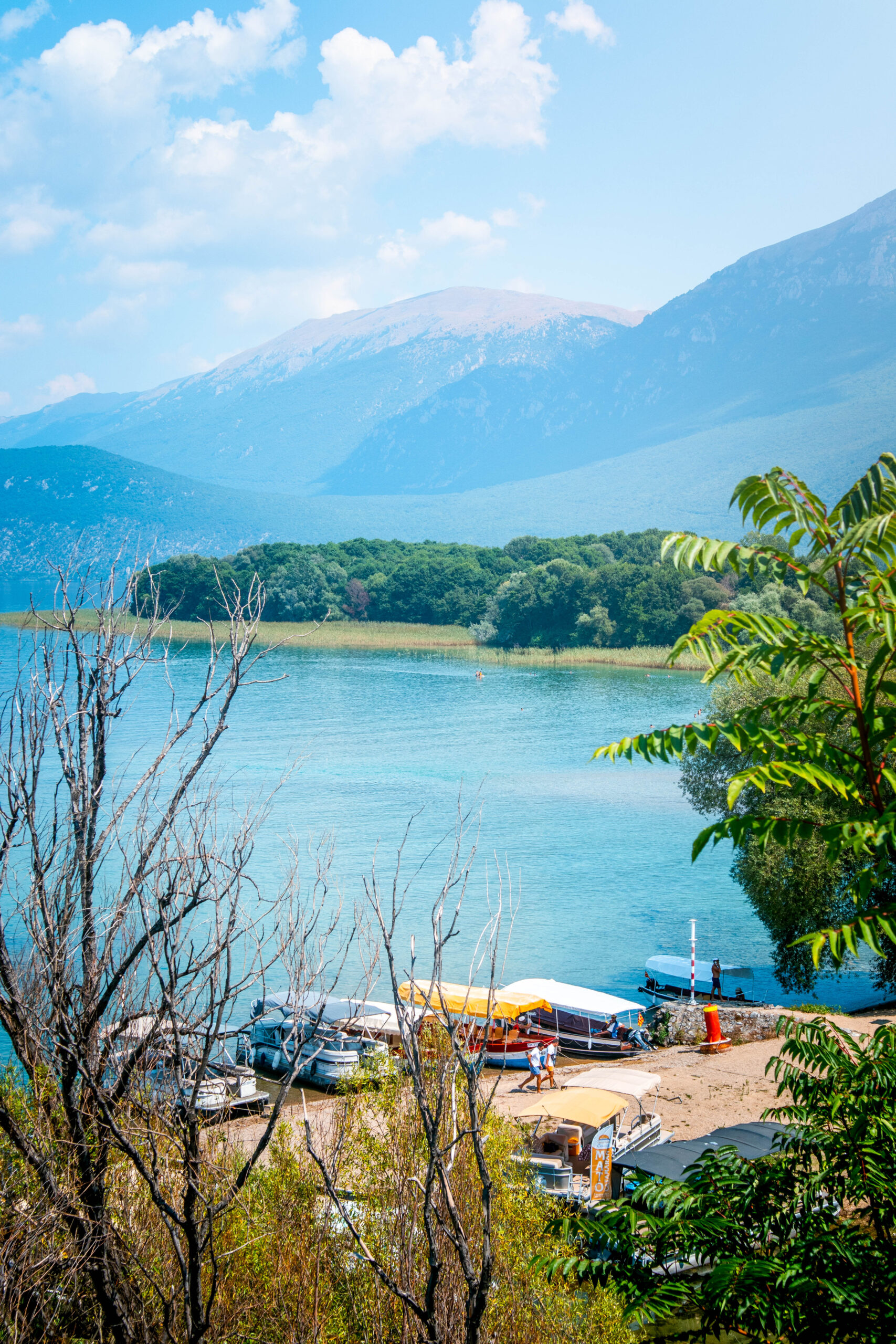
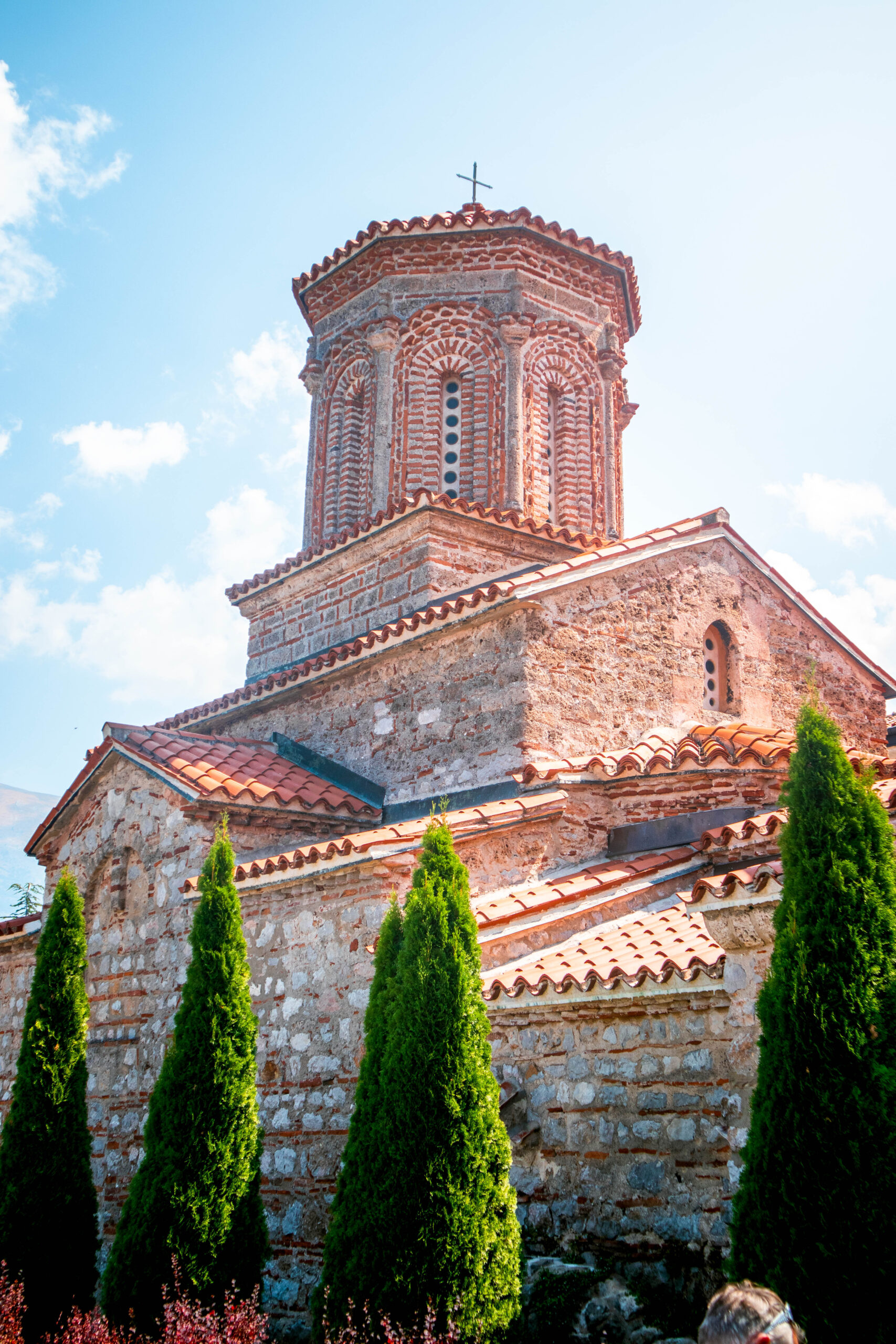
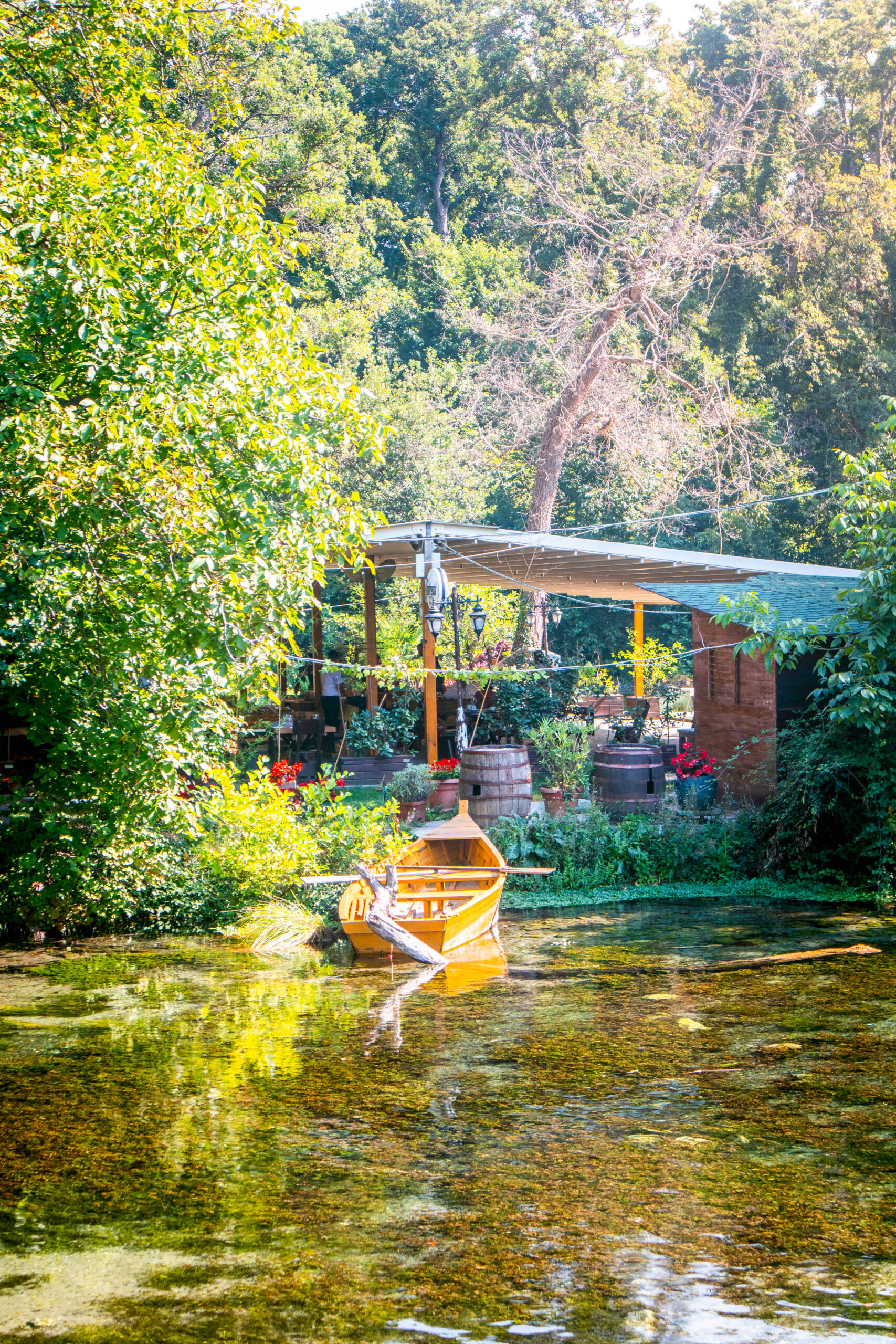
5. Have a swim in one of Lake Ohrid beaches
One of Lake Ohrid’s greatest pleasures is simply swimming in its remarkably clear waters. The lake maintains impressive cleanliness, and jumping in several times a day becomes a natural rhythm during summer visits.
In the Old Town, Saraiste Beach is the most accessible, a half-rock, half-concrete spot near the start of the boardwalk that’s perfect for a quick dip. Just beyond, Potpeš Beach is a slender pebble beach with lounge chairs and nearby restaurants, ideal for spending a lazy afternoon. For something more secluded, Labino Beach is an isolated rocky gem reached through forest paths, offering calm waters and a spectacular viewpoint that rewards the short hike.
Heading south from Ohrid, Nemo Beach near Sveti Stefan is a lengthy stretch lined with restaurants and bars, where the atmosphere is lively and social. Metropolis Beach offers rocky shores with a more local vibe, popular with residents who know the area well.
In the far south toward Albania, you’ll find some of Lake Ohrid’s most stunning spots. Gradishte Beaches are small swimming areas near the Bay of Bones, perfect for a post-museum dip. Trpejca Beachfront is beautifully picturesque, overlooked by modern villas and surrounded by dramatic scenery. Ljubanista Beach appeals to adventurous travelers with its wild pebble shoreline and camping options. And finally, Sveti Naum Beach may be the most breathtaking of all (a colorful rock beach split by the monastery, where the water seems impossibly turquoise).
💡Tip: Most beaches in Ohrid, like much of the Balkans, are pebble rather than sand, so bring water shoes if you plan to swim or walk along the rocky shore.

6. Visit Samuel’s Fortress
Dominating Ohrid’s skyline, Tsar Samuel’s Fortress offers spectacular panoramic views of Lake Ohrid and the surrounding mountains. This 10th-century fortification sits atop a hill that has hosted defensive structures since 200 BC. While the Bulgarian Emperor Samuel restored the castle into its medieval form when Ohrid served as the capital of the Bulgarian Empire, the site has witnessed countless rulers and kingdoms throughout its long history.
Inside the courtyard, you’ll find remnants of ancient structures including a cistern and stone foundations. The real highlight, however, is walking along the fortress walls to the prominent tower viewpoints, where you can capture stunning photos of the Old Town cascading down to the azure waters below.
🎟️ Access to Samuel’s fortress costs 2.5€. Tickets can be purchased on-site with cash.
🕒 Samuel’s fortress is open from Tuesday to Sunday. It opens at 9.00AM daily but the closing time varies seasonally.
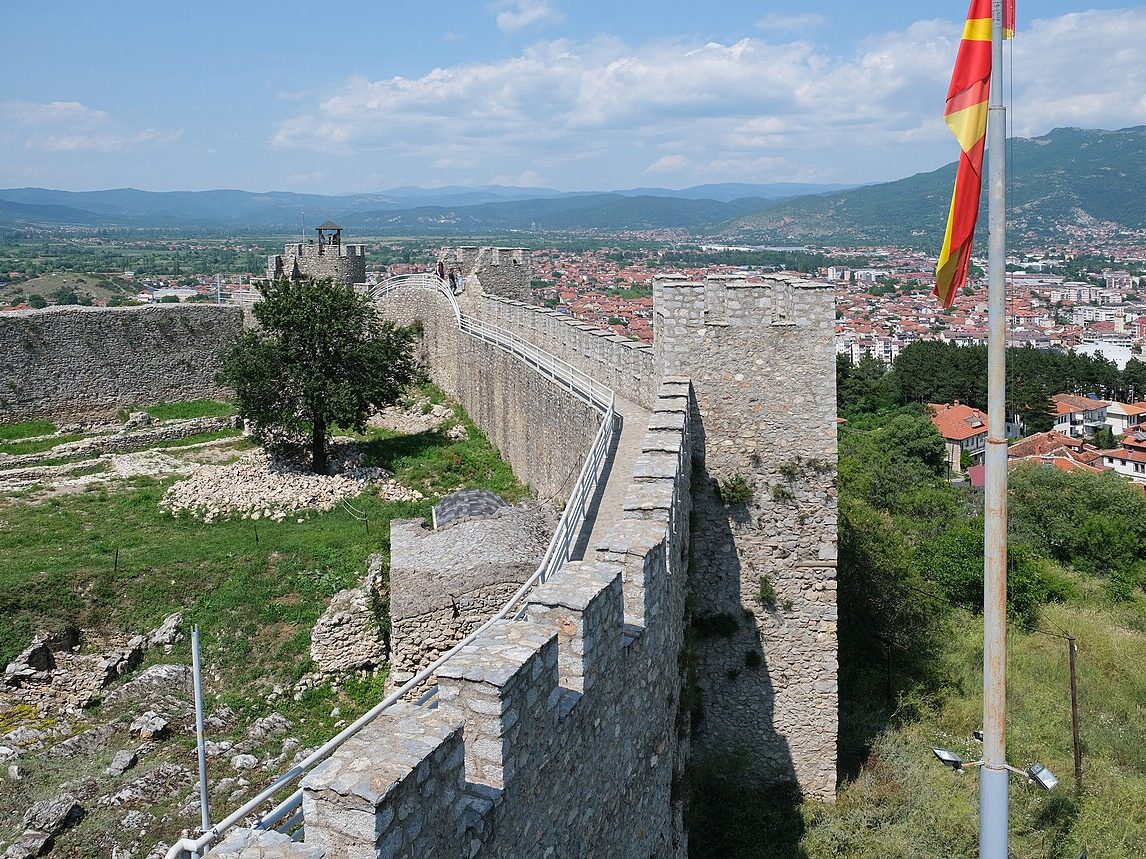
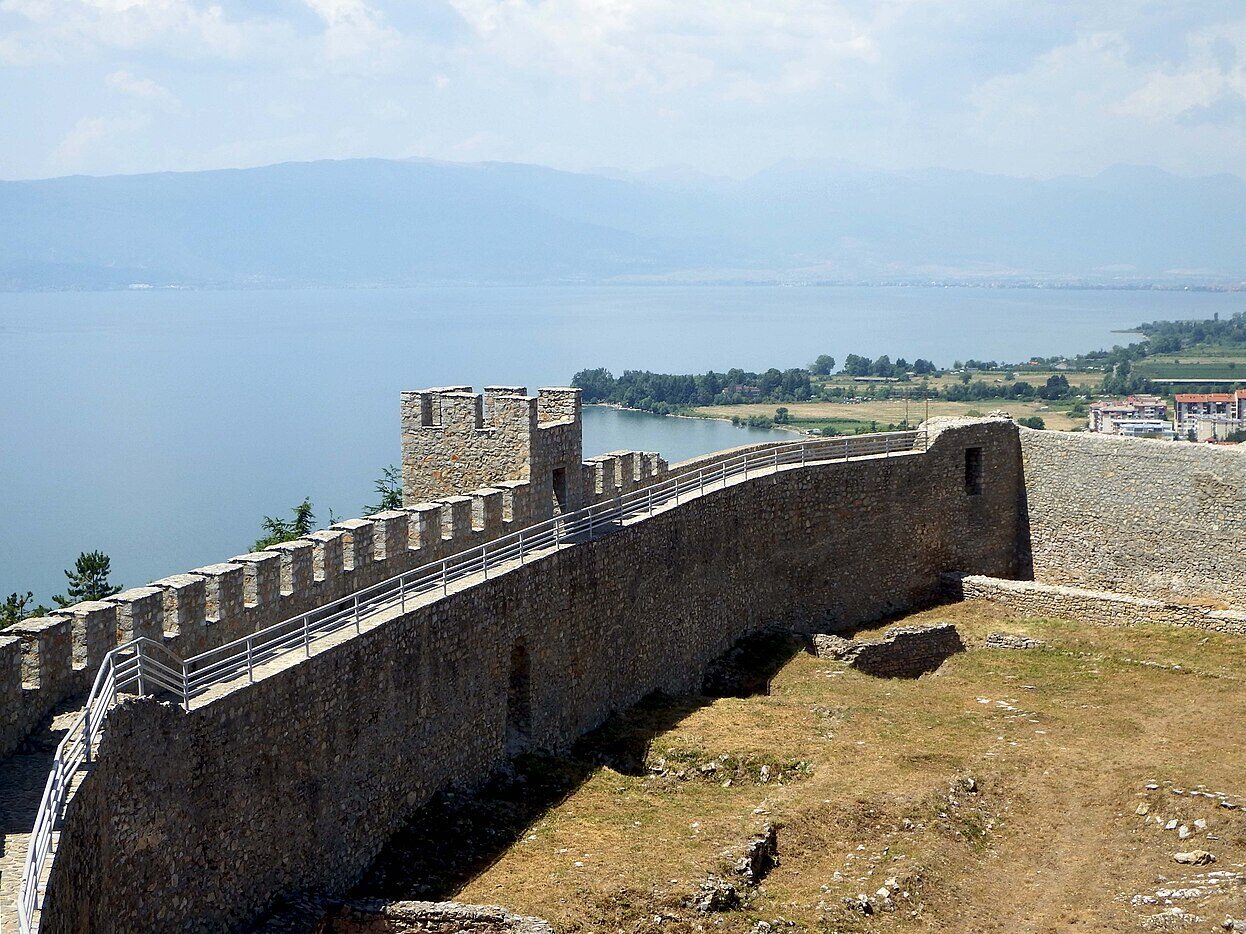
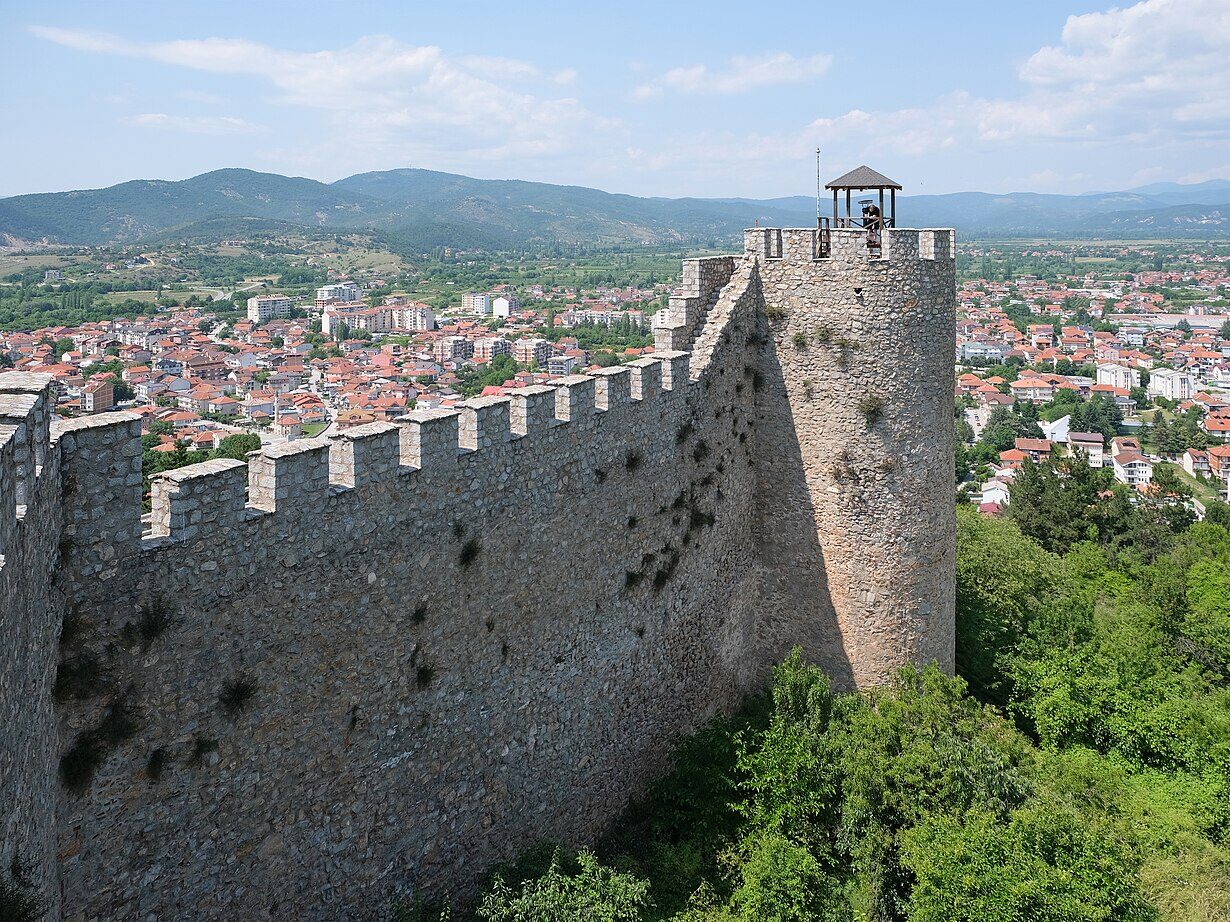
7. Wander Through Ohrid’s Old Bazaar
As evening approaches, the heart of Ohrid truly comes alive. The old bazaar, particularly along St. Clement of Ohrid Street, transforms into the thumping heartbeat of the town. Colorful shops, bustling bars, and the irresistible aroma of grilled meats and fresh pastries create a relaxing yet vibrant atmosphere.
8. Step back in time at St. Clement’s Church and Plaošnik
Located on Plaošnik hill, St. Clement’s Church dates to 893 AD and serves as both a religious site and archaeological complex. The church is dedicated to Saint Clement of Ohrid, one of the most important figures in Slavic Christianity and education. The site also features ongoing archaeological excavations revealing layers of Ohrid’s ancient past. While nearby construction may occasionally impact the setting’s tranquility, the historical significance and proximity to other major attractions make Plaošnik an easy addition to your walking tour.
🎟️ Entrance to Plaošnik archeological park and St. Clement’s church costs 150 MKD (~2.50€).
🕒 Plaošnik archeological park and St. Clement’s church is open daily, typically from 9:00 AM to 6:00 PM. Hours may extend during summer months.
9. Visit the Ancient Theatre of Ohrid
As you climb toward Samuel’s Fortress, you’ll encounter the Ancient Theatre of Ohrid, a remarkably well-preserved Hellenistic amphitheater dating back to 200 BC. Unlike many ancient theaters in the Balkans, this one survived from classical antiquity through Roman times, though it underwent significant restoration.
During Roman rule, the theater hosted gladiator fights and public executions—practices that eventually led locals to bury the site in protest. It remained hidden until its accidental rediscovery in the 1980s. Today, the theater has returned to its original purpose, hosting performances and events during the summer months, particularly during the Ohrid Summer Festival when classical music concerts bring the ancient stones back to life.
🎟️ The Ancient Theatre of Ohrid can be viewed from outside for free. There may be additional fees for special performances and events during festival season.
🕒 The Ancient Theatre of Ohrid is accessible 24/7.

10. Tour the National Museum of Ohrid
For those wanting deeper insight into Ohrid’s layered history, the National Museum provides context for the town’s evolution through various empires and eras. Archaeological exhibits showcase artifacts from ancient Greek settlements, Byzantine treasures, and medieval manuscripts. The museum helps visitors understand why UNESCO granted Ohrid its dual World Heritage designation, both as a natural site and cultural treasure.
🎟️ Admission to the National Museum of Ohrid costs approximately 150 MKD (~2.50€).
🕒 The National Museum is open Tuesday through Sunday from 9:00 AM to 3:30 PM (to 8.00 PM on summer hours, from May 1st to September 30th).
11. Take a day trip at Galičica National Park
Situated between Lake Ohrid and Lake Prespa, Galičica National Park is the premier destination for outdoor enthusiasts visiting the area. The park features diverse trails ranging from easy walks to challenging mountain hikes, with unique Balkan flora and fauna throughout.
The mountain peak offers stunning panoramic views of both lakes—a perspective that highlights the region’s dramatic geography. Most adrenaline activities around Ohrid use Galičica as their base.
✨ Save the hassle of working the logistics of renting a car or figuring out local buses route to and from Galičica with this top-rated full-day Galičica hiking tour, including transport to and from Ohrid, guide, lunch and water.
12. Taste unique Macedonian wines
North Macedonia is surprisingly well-known for producing quality wine, though many travelers don’t realize it. The region grows both familiar grapes like Cabernet Sauvignon and unique Balkan varieties like Vranec that you may not have encountered before.
Several wineries near Ohrid offer tours and tastings with transport included from town. The most impressive is Monastery Winery, a picturesque vineyard set in a river valley about 30 minutes from Ohrid. A visit to Monastery Winery includes 5 wines sampling, a winery tour, and a cheese board, all with transportation provided.
If you don’t have time or budget for a full winery tour, visit Bacchus wine bar in Ohrid’s Old Town. This lovely spot offers a wide selection of North Macedonian wines available by the glass, as well as winetasting sessions along with a big platter of different local cheeses, dried meats and fruits.
For boat lovers, you can also book private boat tours that include unlimited wine from local vineyards (a truly bougie afternoon on Lake Ohrid!).

Despite being one of the smallest countries in Europe, North Macedonia ranks among the top 15 wine exporters in the world. It’s currently the 13th largest!
13. Go Scuba Diving in Lake Ohrid
Scuba diving might not be the first activity you associate with a mountain lake, but Lake Ohrid is one of Europe’s most fascinating freshwater diving destinations. Its exceptional visibility (often over 20 meters!) and ancient underwater sites make it a hidden gem for divers.
The lake’s ecosystem is one of the oldest in the world, home to many endemic species found nowhere else on Earth. Diving here feels like entering a living museum: you can explore sunken ancient walls, prehistoric pile dwellings, and even submerged Byzantine relics.
If you’d like to experience this unique side of Ohrid, join a guided scuba diving experience led by expert local divers. After a detailed introduction and safety briefing, you’ll gear up and dive into the lake’s crystal-clear waters, uncovering ancient and cultural treasures while learning fascinating stories about Ohrid’s history.
✨ Read more or book this experience here: Scuba Diving in Lake Ohrid – Explore the Ancient Underwater World
And that’s a wrap on the best things I recommend doing in this Lake Ohrid travel guide!
What next? Maybe you want to keep on planning your trip in North Macedonia or other Balkan countries? Then, these articles may interest you:
✨ North Macedonia Travel Guide 2025: Best Places, Tips & Itinerary Ideas
✨ Balkans Travel Guide: Optimized 3-Week Backpacking Itinerary
Where to stay in Lake Ohrid?
Ohrid has budget-friendly hostels, lakefront apartments, and boutique hotels. The Old Town is perfect for history and atmosphere, while lakeside neighborhoods offer stunning sunsets and a relaxed vibe close to the water.
🛏️ Check more available accommodation in Ohrid, North Macedonia.
Please note that the prices are per night and based on 2025 rates. Prices are subject to fluctuation according to supply and demand, time of the year, and the will of the owners.
Essential Lake Ohrid Travel Tips
Money and ATMs in Ohrid
North Macedonia uses the Macedonian Denar (MKD), not the euro. That being said, many tourist-oriented businesses accept euros, but you’ll get much better value paying in local currency. ATMs are widely available throughout Ohrid’s Old Town and along the waterfront, dispensing denars at fair exchange rates.
Most restaurants, hotels, and larger shops accept credit cards, but having cash is essential for smaller vendors, beach bars, local markets, and entrance fees to attractions. Many ATMs charge fees, so withdrawing larger amounts at once can help reduce transaction costs.
How to avoid crowds in Ohrid
Ohrid gets busiest during July and August, particularly from 10 AM to 3 PM when tour groups arrive and day-trippers make it to the Old Town. As a visitor during high season (and with a big aversion to crowds), I still found Lake Ohrid very pleasant and with a quiet atmosphere. Here are some tips I applied to maximise peacefulness:
- Visit the Church of St. John at Kaneo early in the morning or at sunset.
- Explore the fortress and ancient theater in late afternoon when most tours have finished.
- Seek out hidden beaches beyond the Old Town (like Labino Beach or beaches near Sveti Stefan).
- Take boat tours on the smaller private boats rather than the large shared vessels.
- Dine at restaurants in the backstreets rather than the main waterfront strip.
- Consider traveling in shoulder season (May to June, September to October) for pleasant weather with fewer tourists.
Is Ohrid safe for solo travel?
Yes! From my experience and countless traveler reports, Ohrid is very safe for tourists, including solo female travelers. The town has a relaxed, friendly atmosphere where locals are welcoming to visitors. Still, common-sense precautions include:
- Keep an eye on your belongings in crowded areas, especially the bazaar at night.
- Avoid leaving valuables unattended at beaches.
- Be cautious on hillside trails, especially after rain when paths can be slippery.
- Follow local guidance for water activities and swimming conditions.
- Stay aware of your surroundings when walking alone after dark.
How long to stay in Ohrid?
For a first-time visit, I recommend a minimum of 2 days in Ohrid. This is enough to see the highlights: one day exploring the Old Town, churches, fortress, and beaches, plus a second day for a boat tour all the way to St. Naum Monastery.
However, here’s what I’ve noticed from my experience and talking to fellow travelers: most people significantly underestimate how enjoyable Ohrid is. Many arrive planning a quick 2-day stopover and end up extending their stay to 4 days or even a full week once they experience the town’s magic.
With 3 to 4 days, you can explore at a more relaxed pace, try different beaches, enjoy leisurely lakeside meals, and really soak in the atmosphere without feeling rushed. If you have 5 to 7 days, you’ll have time for wine tasting tours, hiking in Galičica National Park, day trips to surrounding villages, and perhaps even crossing into Albania to explore the western shore of Lake Ohrid.
My advice? If you have time, don’t pack your schedule too tightly after Ohrid. There’s something about this place that makes you want to stay longer, and you’ll thank yourself for building in that flexibility!

Budget for Lake Ohrid (solo backpacker style)
Despite its rising popularity, Ohrid remains one of the cheapest destinations in the Balkans. You can easily enjoy great food, lake views, and cultural experiences without breaking the bank. Based on my experience, here is a summary of your main expenses if you travel to Lake Ohrid (solo backpacker style):
- Transportation: ~30€ (return bus trip between Skopje and Ohrid)
- Accommodation in the Old Town: 15€ per night in a hostel dorm; 40€ and onwards in a hotel or a private apartment
- Attractions: 30€ (Lake Ohrid day cruise + Samuel's fortress + Plaošnik archaeological site + kayak rental)
BONUS: Map of Lake Ohrid, North Macedonia
To help you make the most of your time at Lake Ohrid, I created a map that highlights the best places to visit and activities to do during your trip. I hope you will enjoy it!
💡 To navigate this map, simply use your computer mouse or fingers to zoom in or out, and click on the icons to get more information about each location. You can access the index by clicking on the arrow in the top left corner. Additionally, if you want to save the map to your Google Maps account, click on the star next to the map’s title. To view your saved map on your smartphone or PC, open Google Maps, and navigate to ‘Your Places’ or ‘Maps’ in the menu. If you want to print the map or view it in a larger window, simply click on ‘View larger map’ in the top right corner.
I hope this Lake Ohrid travel guide is helpful and informative!
📌 Liked it? Pin it!













